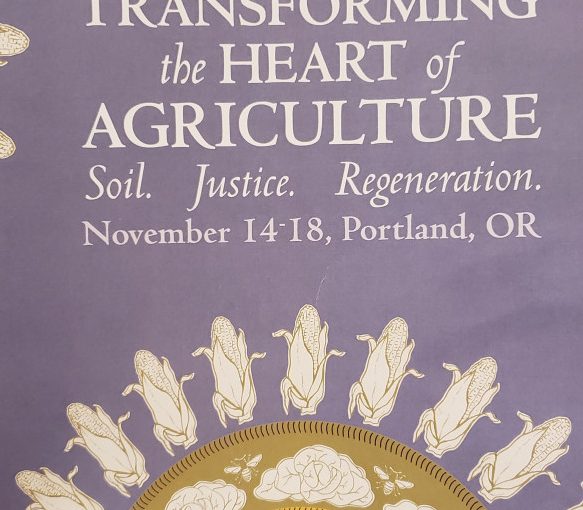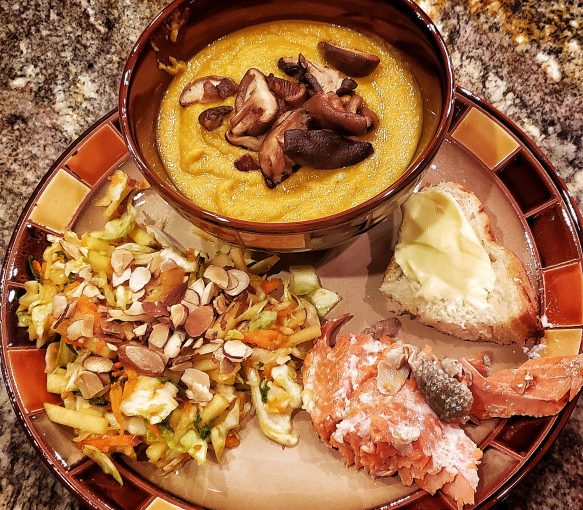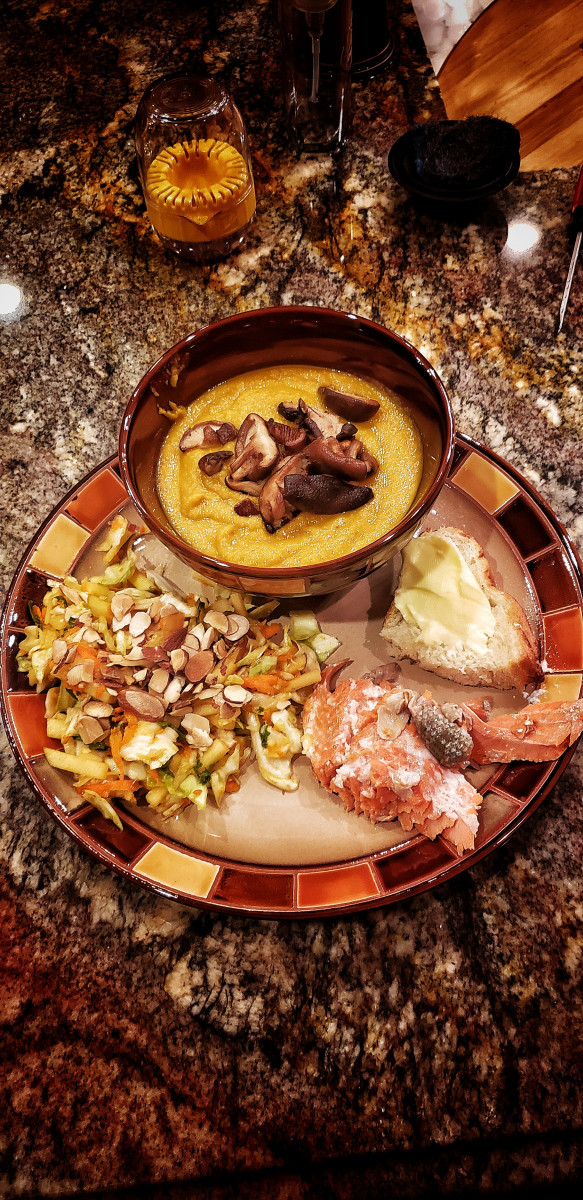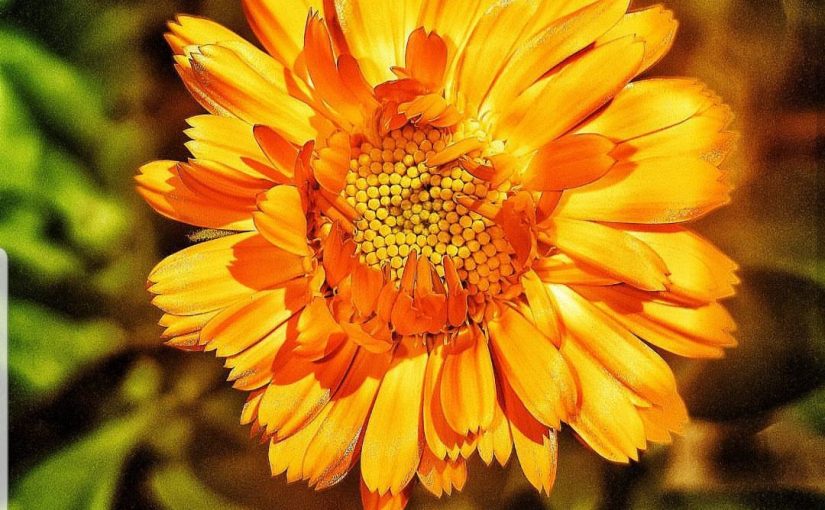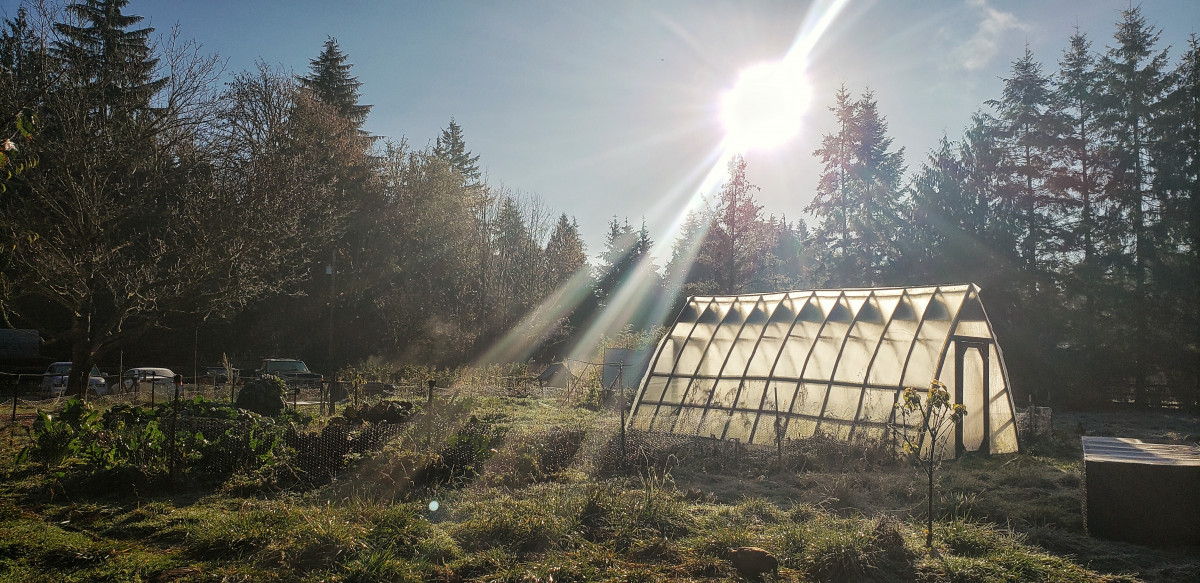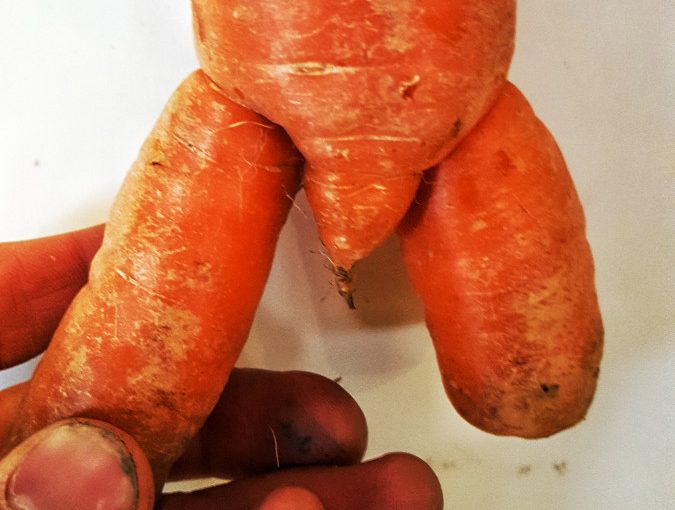Autumn’s Apprentice and Rooting into Regenerative Routines is a contract designed to document the journey into living and working on a regenerative suburban farm during the harvest season. This was the main basis of my contract and the language of my first learning objective. I dove into this lifestyle head-first and embraced all of the amazingly bright excitements it brought alongside the challenges and shadow adaptations I needed to face. I learned what it takes to tend to animals on a regular basis, put the garden beds properly to sleep for the winter, and how to live in a community of close proximity. I learned how much there is to learn in this field, and yet it felt like I was simply remembering ancestral knowledge in a modern context. I was able to document this experience in a quality way and was able to get a window into all the ways I would like to document and extrapolate this experience going forward. Changing every variable of my life from the fundamental living situation to sources of income, and forces beyond my control were much more cumbersome than I could have predicted, not to mention being set back by significant injuries on the 2nd day of the quarter. That is what Autumn is all about; inventorying the work accomplished this past solar cycle, sending gratitude for life itself, and making a plan to reflect properly for the coming year.
My second learning objective was “to learn about regenerative farming concepts, practices, and design.” I accomplished this goal to the extent that was possible in these 10 weeks. I read three books, “The Lean Farm” – “The Resilient Farm and Homestead” and “Omnivore’s Dilemma” in addition to watching and responding to the documentary “Inhabit.” All of these resources are so extensive that one could revisit them many times over again, and I feel like a more resilient and resourced human having read and responded to them. I had hoped to do more research on relevant topics and articles through podcasts and YouTube. While I was able to listen to some complimentary podcasts, I was not able to respond to them in the way that I had hoped. I hope to synthesize this information into ways that are more accessible to more people.
My third learning objective “to educate myself on the examples of regenerative farms, practices, and food culture in my community, bioregion and beyond. I feel confident in my attempt and accomplishment of such an ambitious objective. I no doubt learned an incredible amount on these topics and added to my list of people living out these principals in their own way and their own ecological niche. I had hoped to visit a few farms in the area and it turns out that the farm I live at was justifiably way more demanding of my attention and time than I could have predicted. I would like to highlight and connect with these examples in my work going forward. That said, I did accomplish my objectives by taking on some ambitious participation in a lot of the umbrella organizations that deal with these concepts. Going to the Northwest Permaculture Convergence and the Biodynamic Conference were unforgettable and I made some discoveries and connections there that will last a lifetime. I feel like that I was able to even offer my own gifts of conversation, insight, and presence that was reflected back to me by other participants. I went to Nashville, TN and although I was not able to visit farms directly due to limited mobility, I did something far more important. I fed my family with organic, locally-sourced ingredients in the form of remarkably delicious cuisine. This was an education in itself. In learning how to navigate these conversations and practices outside of the bubble of my bioregion, and for them in seeing the love and nourishment that comes with people putting their conscious love into the food they prepare.
I feel incredibly proud of the work I was able to accomplish this quarter. I achieved all my learning objectives to the highest degree that was possible for me considering everything I have been challenged with. While I strayed slightly from some of my activities, I accomplished everything that truly mattered to me and to the heart of the contract. I feel like I invested 10 weeks of my life into a cause that had benefit to myself, my community, and my world. I rooted into regenerative routines and humbly served as Autumn’s apprentice.
Category: Uncategorized
Inhabit: A Permaculture Perspective – Week 8
“All we need to live a good life surrounds. Sun, win, people. buildings, stones, sea, birds, and plants. Cooperation with all these things brings harmony, opposition to them brings disaster and chaos.”
-Bill Mollison, Co-Founder of Permaculture.
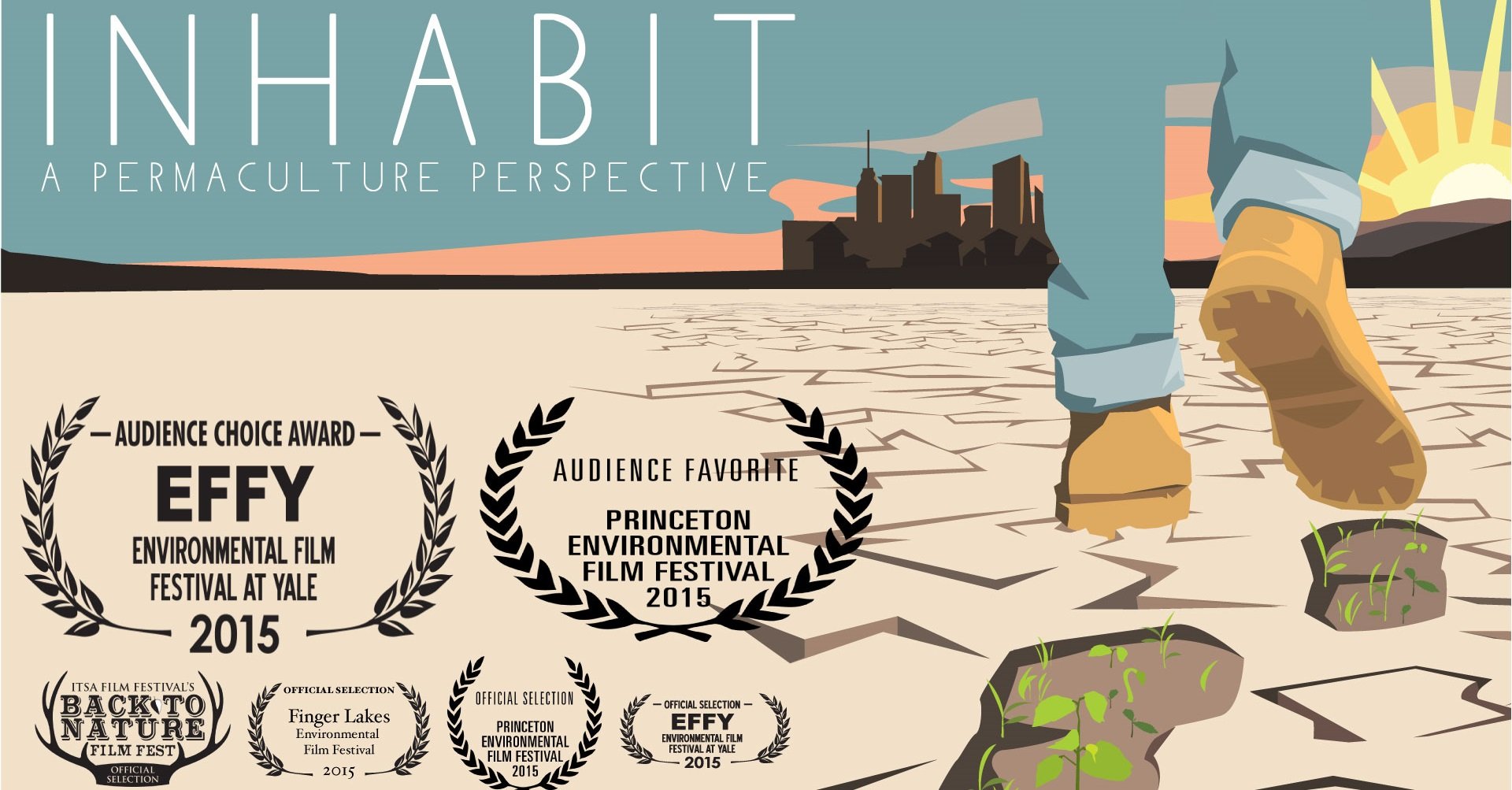
Inhabit is incredibly valuable to all of the world’s beings. There is just no other way to properly say it.
If you need hope in a dreary world of newspeak, this is it.
If you need legitimate, no fluff ideas to have an impact on your environment, fellow humans and more-than-human communities… this is it.
If you need easy-on-the-eyes entertainment that will include cute animals and teach you at least one things along the way… this is also that.
I have seen this movie more than a few times now, and it was the first thing I thought of assigning myself when I thought of roaming into the video form of infotainment. I was on death’s door with an illness that turned me inside out a few years back. My partner at the time was also ill, and there we sat in bed, googling “permaculture videos” to see what we could pass the time within that delightfully inspiring category. I had seen a number of small videos related to the subject and knew of people studying it in my community, but I had not ever immersed myself into it’s seemingly alternative (read: all-too-real) reality.
In their own words:
“Inhabit explores the many environmental issues facing us today and examines solutions that are being applied using the ecological design process called ‘Permaculture’. Permaculture is a design lens that uses the principles found in ecosystems to help shift our impact from destructive to regenerative. Focused mostly on the Northeastern and Midwestern regions of the United States, Inhabit provides an intimate look at permaculture peoples and practices ranging from rural, suburban, and urban landscapes.”
It was inspiring to say the least.
If you need to stop reading here.
Go watch it.
If you can’t afford it. I will buy for you.
It was the best $10 I ever spent to own it. It is only $3? to rent.
Here’s the link, you’re welcome.
https://vimeo.com/ondemand/inhabit
Some highlights:
-Ducks eating slugs. Seriously, as Bill Mollison always said, “You don’t have a slug problem, you have a duck deficiency…”
This is the movie and definition of permaculture in a nutshell. Your problems are your solutions. If you have too many slugs eating all the mushrooms in your fungus log farm, you don’t spray the mushrooms or poison the slugs (and yourself). You get ducks to roam the log farm and eat them for you. Side-effect: Duck eggs, seasonal local, pasture-raised meat, and/or cute baby ducklings. Your move.
Charles Eisenstein, the author of many books including Sacred Economics, is such a lovely example of a human and his presence in this movie is not surprising.
““When everything is subject to money, then the scarcity of money makes everything scarce, including the basis of human life and happiness. Such is the life of the slave—one whose actions are compelled by threat to survival. Perhaps the deepest indication of our slavery is the monetization of time.” -C.Eistenstein.
If you don’t want to grow food, serve your community, consider energy conservation, and/or get baby ducks after this movie, then I don’t know what else to tell you.
“True discipline is really just self-remembering; no forcing or fighting is necessary.” -Charles Eisenstein
All of our problems are really just solutions waiting to happen. This does not diminish their seemingly insurmountable scale, but it needs to be said so that every individual, no matter their circumstance, can be inspired to affect change in their lives, community, and environment. This movie is a testament to people living their lives as examples of it. We need to apply unique solutions to our own situation, yet there are countless examples of people solving almost any problem we can think of. If we just turned off the news and started turning towards each other.
“Never doubt that a small group of thoughtful, committed, citizens can change the world. Indeed, it is the only thing that ever has.”
-Margaret Mead
Week 6 – Books for the Every Human
Books are lovely things arn’t they? They mostly sleep on a shelf for most of their lives, and yet some can change the way we look at the world. There are those books that even get pulled from the shelf over and over again to reference their gathered wisdom. The three books I read for this quarter were the best of both these worlds. Books that could alter one’s life from the moment they laid eyes on it and books that have a seemingly endless (read: comprehensive) wealth of information like the encyclopedias of old. These books change your life every time you pluck it from the shelf. Reminders of how to live, eat and act intentionally with the resources and energy of the world. True wisdom that is not easily forgotten nor mastered. A spectrum of surreal simplicity and sometimes seemingly unmanageable for one person to fully comprehend.

For no other reason, other than the fact that it was published first, allow me to introduce The Omnivore’s Dilemma by Michael Pollan. This book explores the natural history of four meals: fast food, industrial-organic, local pasture raised, and then the forest foraged. It is hard to believe that this book was published 12 years ago already. It was a true innovator in initiating the conversation between people and the sources of their sustenance. It is also equally unbelievable that it took until 2006 for the information inside to become known to a large audience.
The problems with industrial agriculture have long been around, of course. So long, in fact, that the sad facts inside this book have grown to disastrous proportions. The section on farmers essentially becoming bankrupt due to the business models of big industrial agriculture and federal governments is disturbing, to say the least. Without government subsidies, most corn farmers would be bankrupt while big-Agribiz is reaping in billions of dollars in profit. In these backward business models, farmers essentially have to grow more and more corn in order to qualify for subsidies, consequently increasing the supply and lowering the demand for corn. The corn hoax runs deep as we continually manufacture ways to use the excess and turn it into food-like products that make up an incredible amount of the grocery stores’ processed food. Sadly, a large portion of corn goes to feed industrial animals. This book also does a great job to round out the writing by including a whole-brained look at the inherent flaws in industrial organic, which can often do a fair amount damage itself despite having the halo ornament of organic on the label. Then, of course, is the idyllic pasture-raised meal and the all-too-perfect, but the often-out-of-reach foraged meal. These offer up the hope and feel-goodness that is needed after basking in the horrors and tragedies associated with the industrial-ag world. This book is a must-read for anyone who has a mouth.

Next, we have The Resilient Farm and Homestead by Ben Falk. I first learned about Ben Falk as being showcased in the award-winning permaculture documentary Inhabit. I was pleased to see that he has written thee most comprehensive guide to homesteading resiliently I have ever heard of. It is truly remarkable, whether you are looking for solutions in Earthscaping, water security, perennial crops, soil fertility, nutrient-dense food, fruitinge mushrooms, design, adaptive fuel, food forests, shelter building, and/or animal care… there is something for you. Rather than going into all of the immense number of topics that this book has to offer, let me just offer the two most important takeaways I have, that I feel everyone needs to consider. Both of these have to do with fossil fuels. One side of the thought considering peak-oil is on the foreseeable horizon is that we need to use these fossil fuels while they are cheap and abundant on projects that genuinely set us up for a resilient and fruitful future. For example: Earthscaping, aka using heavy machinery to alter the landscape could make the difference between a barren meadow and an abundant set up of swales and micro-climates. With a back-hoe, you can do more eventual impactful good than a thousand shovels over a week. Even if we want to (read: need to) have a fossil fuel-free future, we need to think about how we use it while it is here to have the most lasting and regenerative impact. The other side of that coin is that it might behoove us to save some fossil fuels for future jobs that we would rather not do manually (like chainsawing for example). Even if we achieve freedom from fossil fuels in the large-scale ways we need to in industries like transportation, agriculture, and manufacturing, having some spare around for some hand-held tools would be smart. That said, if we are at the point of having transcended fossil fuels, I imagine everything would be solar-powered electric. Either way, this is probably the biggest thing we, as a world-community, need to consider. Put The Resilient Farm and Homestead on your shelf if you are looking for a cutting-edge resource guide to living your best life in harmony with the systems of the earth.

Lastly, we have The Lean Farm by Ben Hartman. This book has an essential perspective on efficiency in the person, partnership, and business models that we all must interact with no matter our occupation. This guide on “how to minimize waste, increase efficiency, and maximize value and profits with less work” is a must-read. Even if you don’t plan on farming or are not into systems thinking, this can help one establish an eye towards seeing value and expelling waste. Again, this is useful no matter what you do with your life. You see value, when you are able to imagine the flow of resources and see where inputs and value-added happens. Ben also gives great guidance on how to create pull from your customers instead of pushing your products on them. “The question is whether or not the product is of value to the buyer. If a high price is set because of the manufacturer’s cost, consumers will simply turn away” –Taiichi Ohno, creator of the Toyota Production System (pg. 121). From how to streamline your workspaces to streamlining relationships and routines, this book is essential for anyone doing business.
There you have it, three books I would say are a must-read for anyone who eats, lives in a home, or uses the economy… that said, that is everyone. The future thanks you and you’re welcome.
Week Ten – The Final Countdown
Greetings! Here is my final project! What a pleasure to serve and to see people make a significant change in the world.
Here is a link to the Prezi:
Biodynamic Conference – Week 8
The Biodynamic Conference 2019 was incredible. The only downsides were that I had decision fatigue from deciding what of the amazing workshops I wanted to attend and that I had to miss the rest of the conference.
I was impacted by the community, the ideas, the passion, and the stories of real-life people making a difference. From the key-note speeches to the workshops, to the food, and the connections of people in-between. The Biodynamic Conference is something that I want to attend over and over again. It inspired me not only to seek out things to consume but concepts and curriculum to create. Knowing that there are people out there hungry for this type of information and inspiration is incredibly motivating.
Even though I was short on sleep, I was committed to fully immersing myself into the experience and downloading as much as I could considering. From the very beginning, I felt like I was witnessing the future of farming embodied in people who had been living in the future for a number of years now.
Wintergreen Farms was a stunning example of how to do things in a good way. They respect the seasons and nutrient cycles as well as the indigenous people who inhabited the land before them. They are the oldest operating CSA and instead of finding ways to just bring in more profit, they are constantly seeking ways to bring value to their customers, community, and the land. They believe wholesome food is a basic human right and they do everything in their power to provide for the people.
http://www.wintergreenfarm.com/
Vilicus Farms in northern Montana is a stunning example of how to do industrial-scale agriculture in an ethical way. “Vilicus” is Latin for “steward of the land.” They have ~7,400 acres and are a premium supplier to a lot of organic food companies. They go above and beyond organic by planting pollinator habitats, attempting to prevent soil erosion, and looking into becoming biodynamic certified on an industrial scale. They have an apprentice program to raise up the next generation of mindful and business savvy land-stewards.
https://www.vilicusfarms.com/
A quote from their website:
“The real key to sustainable farming, for both plants and people, is collaboration. By building synergistic relationships throughout the food system – farm-to-table, legume-to-grain – we can cultivate a more resilient future for all of us.”
-LIZ CARLISLE
Lunch was incredible as expected. When you are surrounded by people who make growing the best food in the best soil their living, you can be sure that the eating opportunities will be lush.
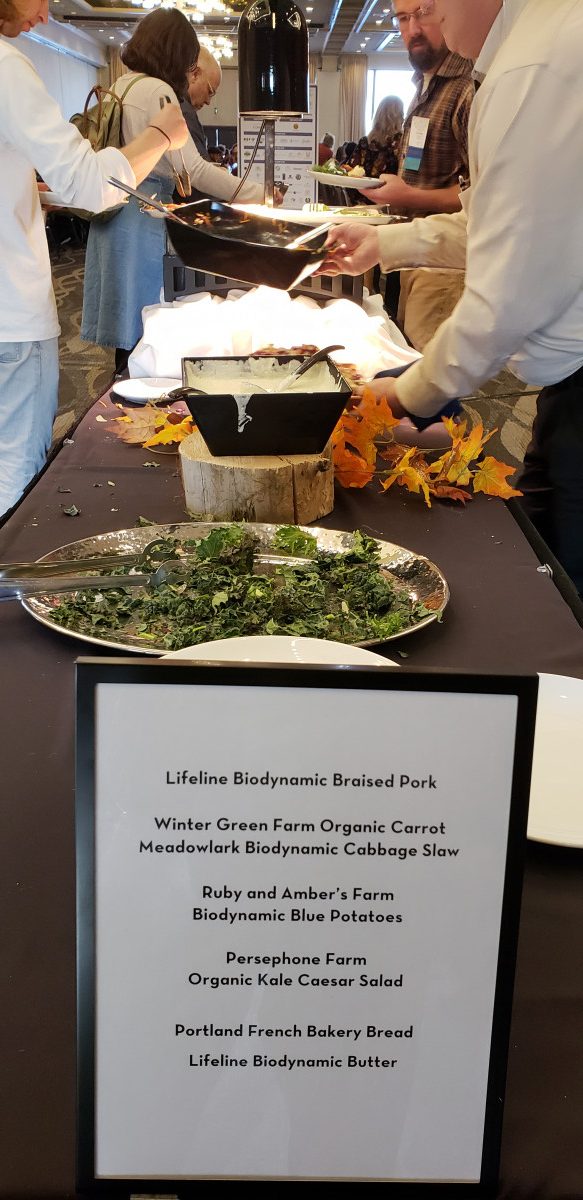
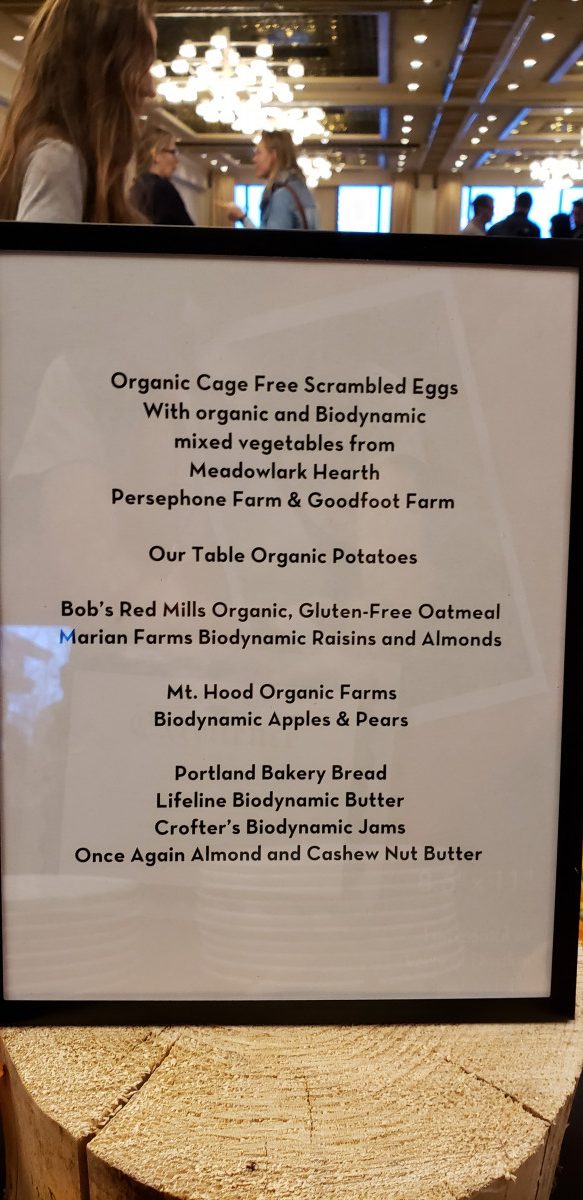
All the workshops were wonderful and so I’ll take a short time to highlight a bit about them.
The first workshop was called “Quantum Physics for Biodynamic Farmers.” What I took away from this workshop was further clarity on how much of a difference the observer, the doer, and the space-between has an effect on the physical matter and processes. Basically, the presenter laid out a few of the basic accepted ideas behind quantum physics and how that relates to the biodynamic concept of spirit playing a role in tending to the earth. Quantum Physics proves that matter changes state based on the observer thus linking the non-physical to the physical. A quote from his presentation “As human beings, our task is to bring higher, spiritual realities into a relationship with the physical world… And the heart organ is precisely what the higher I uses to make the sensory self its instrument so it can use it.” —Rudolf Steiner. Elad Sadeh, the facilitator, did an incredible job laying out very complex concepts that a diverse group of attendees seemed to be able to digest.
The second workshop I attended was called “Yahowt! Indigenous-Led Permaculture Design and Indigenous Foods.” The presenters, all female, showcased their vision for permaculture education that is reclaimed by women and indigenous folk. Permaculture is largely a collection of ideas and methods organized by Bill Mollison but largely inherited by studying long-held indigenous agroforestry and small-scale agricultural techniques. Through some innovative non-profit work, these women are educating others in permacultural practices, restoring native plants, and creating edible autonomy in their respective communities.
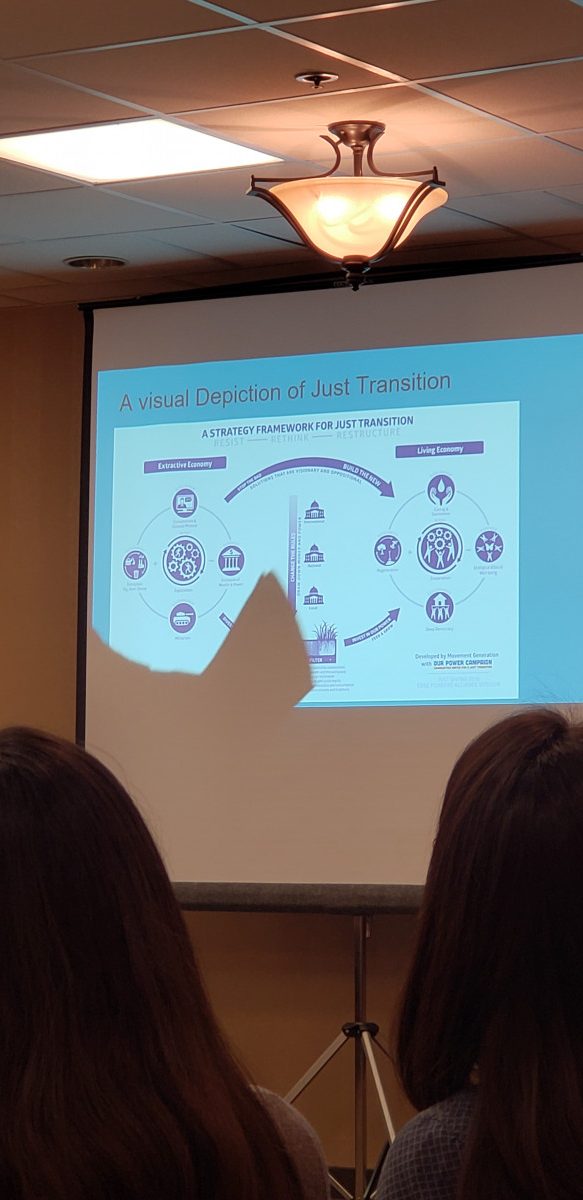
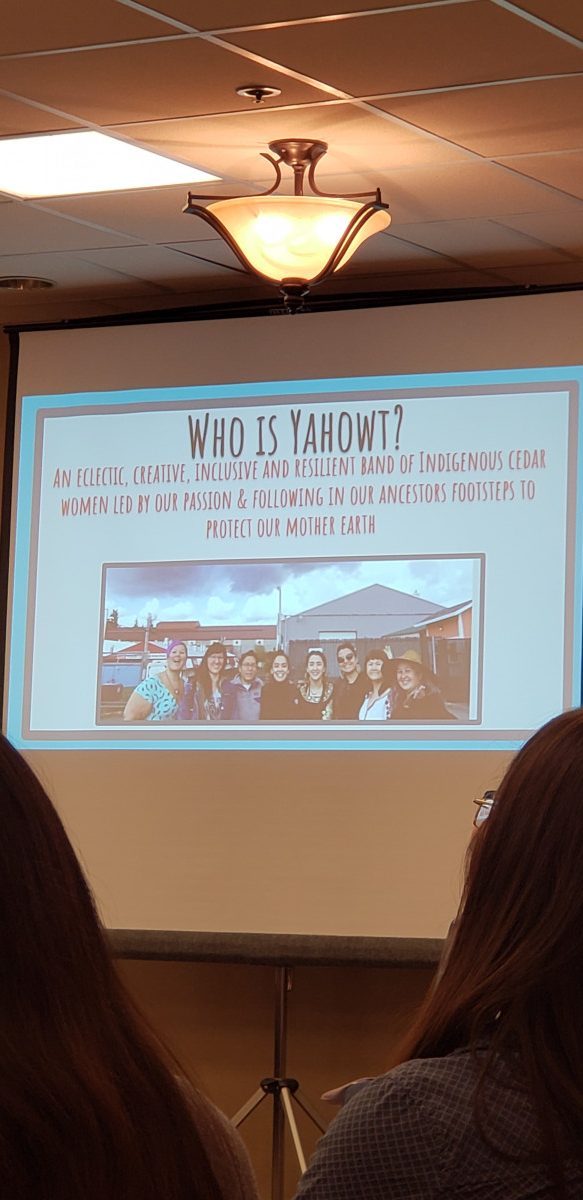
Finally I attended a workshop called “From Farm Organism to Farm Indviduality” by Ueli Hurter. Ueli is an incredible human and I’ll admit, I don’t think that I could properly do justice to what he was talking about off the top of my head, but the way hey spoke was captivating (with a Swiss German accent). He has an impressive resume’. From the Bio-dynamic website, “he has been the co-head of the Agriculture Section at the Goetheanum (with Jean-Michel Florin) since 2010 and currently sits on the executive board International Biodynamic Association… He is co-manager of the enterprise Ferme de L’Aubier, a Demeter certified farm with mixed culture and an on-farm cheese dairy, bio-hotel, bio-restaurant, café-hotel, and eco-living quarters.” So not only is he operating from a global organizational perspective, but he has his own small-business operating on every level of market integration. I would say the main things that I pulled from his 1.5 speech was that bio-dynamics is legitimate. The data he pulled from a 20 year study shows that it is far and away a better method of food production that conventional, producing more and better quality food for less input and petroleum use. The data even showed that it edged out organic is most every category. He believes that we need to reshape the marketplace and bring producers in closer contact with their customers. The producers are not making much money because their products must go through processors, wholesalers, and stores before it makes it to their customers. Instead of it being such a linear model of the value-added economy, that these various aspects of the marketplace can be more dynamic and work across the hierarchy in order to create more value and earn more income.
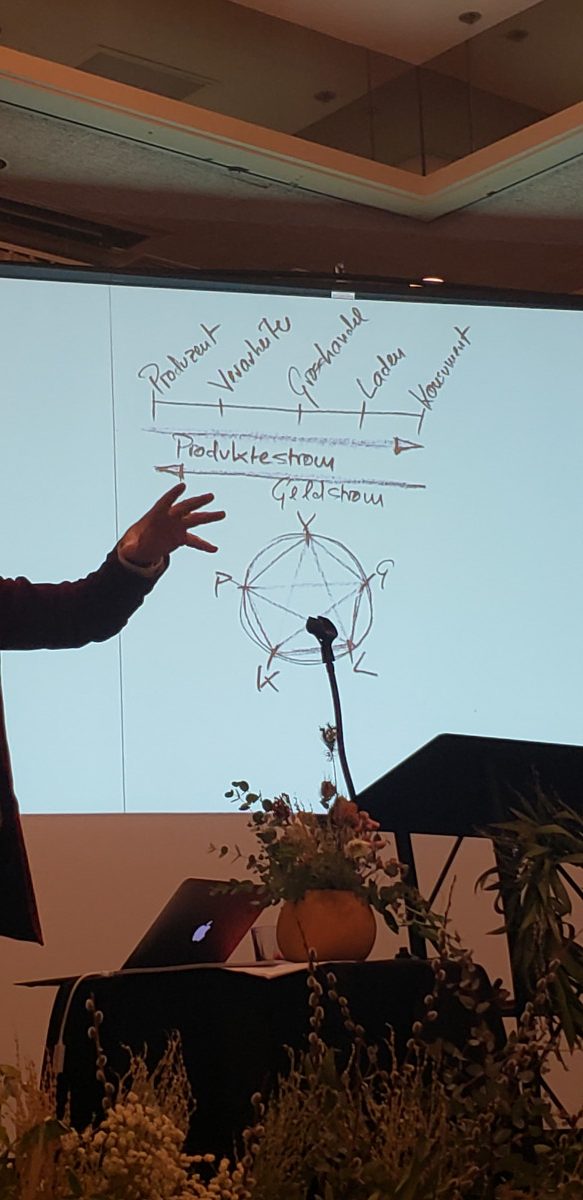
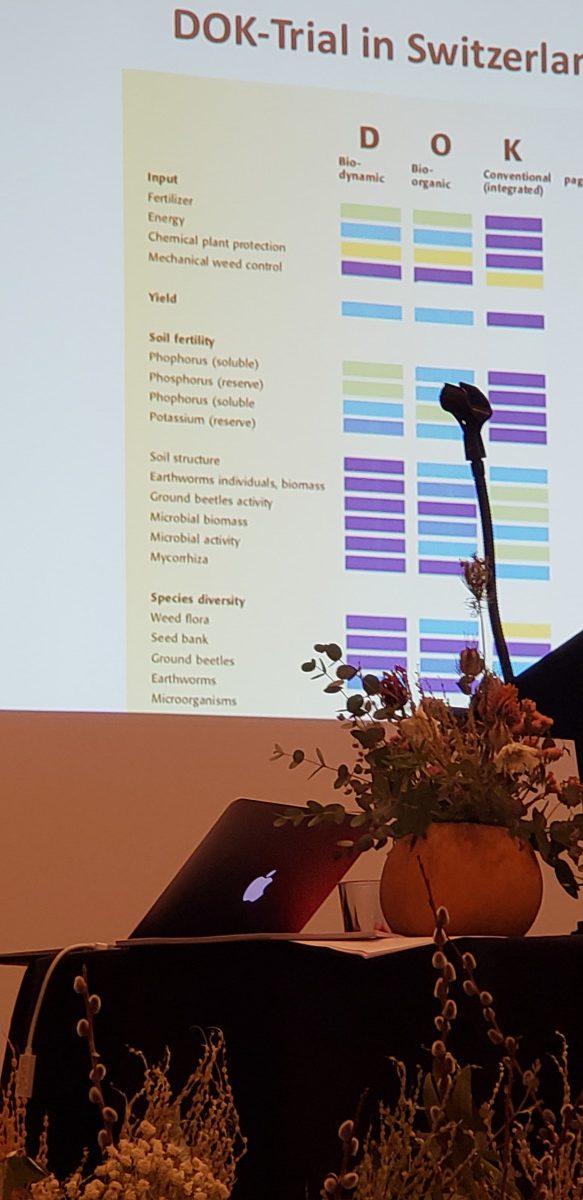
Overall the Biodynamic Conference was overwhelming in all the ways one would want it to be. Lots of lovely people doing important work for the betterment of the Earth. I was talking to someone at the conference about how just getting all these people together in one place has a profound energetic quality without even anyone learning anything. I’m sure there were countless connections made that will have an impact on our agricultural and global economy just in the downtime. I know I exchanged numbers with a few people and look forward to seeing the fruit that comes from all these seeds and sprouts.
Nourishing Nashville – Week 9
Traveling always presents a challenge to the traveler when it comes to finding the proper nourishment on the road. Spending time with family around the holidays can foil even the best-laid plans to eat nourishing food on our own terms. I decided to take both these challenges head-on during a ten-day trip to Nashville.
I am spoiled in the food department here on a permaculture farmstead in the heart of the Pacific Northwest. I am surrounded by people who consistently put their money and their minds where their mouth is; eating with a conscience and connection to their cuisine. I had just come off attending the Biodynamic Conference in Portland too… where all the conscious eaters, vintners, and land-tenders came to celebrate their passion for proper nourishment.
It became clear to me right away that my mission here was to be of service and learning, not of martyrdom and trotting through on a high horse (grass-fed, of course). I wasn’t there to preach of the perils of the industrial food industry. I was there to listen to the pulse of my people, our collective culture, cuisine and the familiarities of family.
Instead of trying to take over the Thanksgiving Day meal that was already well on its way, even though days away, I decided the most beneficial way to contribute was to take on the role of the family chef on the days before and after. Simply put, I was going to spend most of my free time, sourcing as much organic, local, and seasonal fare as I could and offer it up in as abundant and creative a fashion as I could.
Step one was getting in a fuel-fed metal horse and trotting about town to scout out ingredients. This led me to the heart of the city where there was an impressive permanent farmer’s market. Although it was on a random weekday, out of season, there were still two vendors there offering a plethora of seasonal goods. They didn’t have any obvious markings of their practices (organic or otherwise) upon first glance, so I feared that they might be chemical-laden conventional fare…
Alas, we must not be afraid to ask, and I was delighted to hear the charming southern man confess, “we don’t spray nuttin’ on ’em, we just let ’em grow.” That was all I needed to know in that moment, and my enthusiasm returned to the surface. I couldn’t help but get a bag full of almost everything they had to offer. From fresh ginger to bulbous beets and mustard greens, and a whole host of things in between. Carrots with the dirt still on ’em, plump onions, pastured eggs, and apples straight from the orchard, all one could ask for in the middle of November.
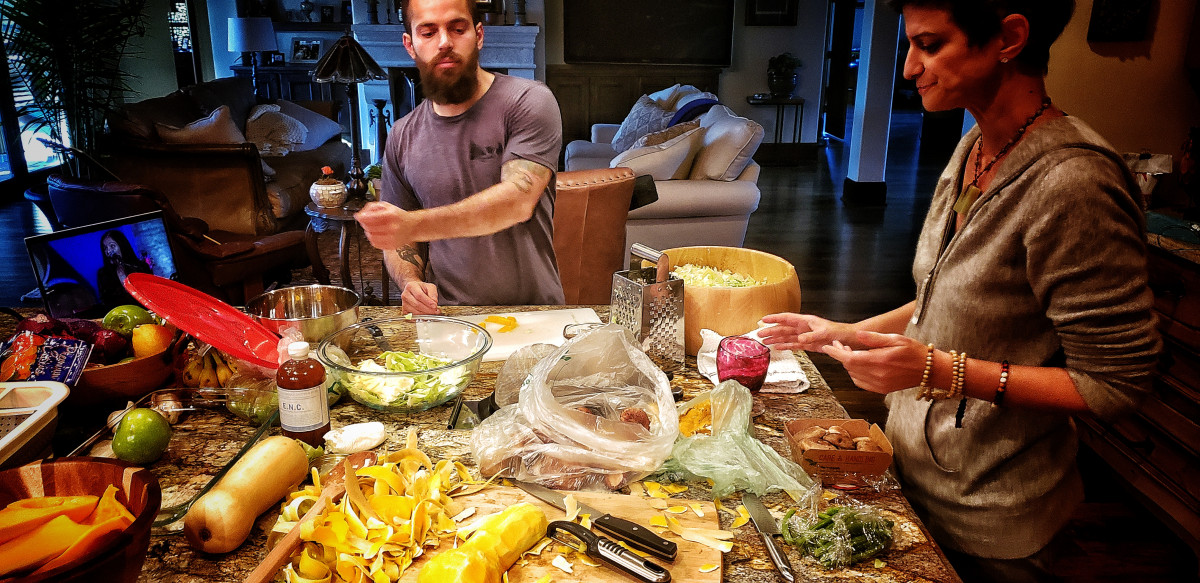
Next was to the appropriately titled, “Produce Place” to supplement the shopping experience. I was able to score some sliced almonds, organic butter, local goat cheese, squash, spices, pears, kale, shiitake mushrooms. I had no idea what I was going to make, but I knew that having quality ingredients was the key to the door of delight.
How appropriate that the day before Thanksgiving was the day my delightful grandparents were celebrating their 59th anniversary. Some other relatives were flying in that evening as well, and so what better excuse to feast with said family.
My Aunt Kris had suggested soup and sourdough bread, and so it struck me that a butternut squash, carrot, ginger, turmeric, and garlic blend would be just the ticket. I had also recently surprised myself when I made a sweet and savory coleslaw at the farm that consisted of cabbage, apples, mustard greens, specialty mustard, vinegar, and spices a-plenty. For the meat-friendly among us, I leaned into my generous host-of-an-uncle Ken’s request of Wild Alaskan Salmon (topped with butter and lemon, of course). Top it all off with some freshly foraged chanterelle mushrooms and plenty of fine wine, and we had ourselves a feast.
I’ll save the recipes for my upcoming cookbook blog, but I will highlight a few of the features of the feast:
When preparing the soup, saute’ the onions, garlic, turmeric, and ginger on the bottom of a big soup pot while you bake the peeled and cubed squash. This stacks functions and brings out the unique flavors of both separately before you bring them together in the Vitamix for a proper creamy finish. Garnish with the sauteed mushrooms for the gourmet touch.
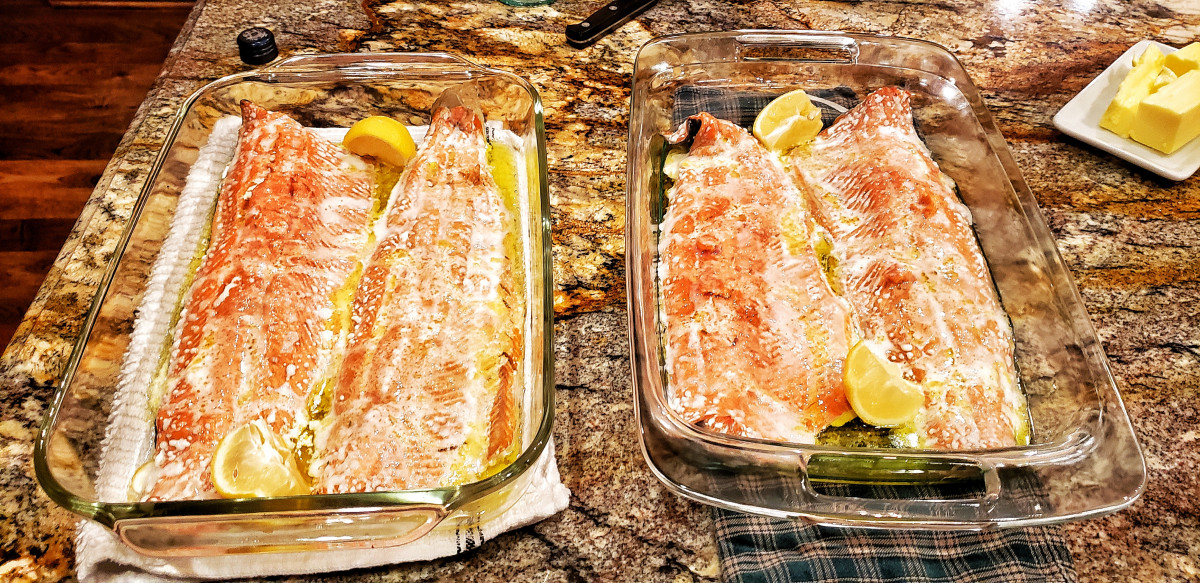
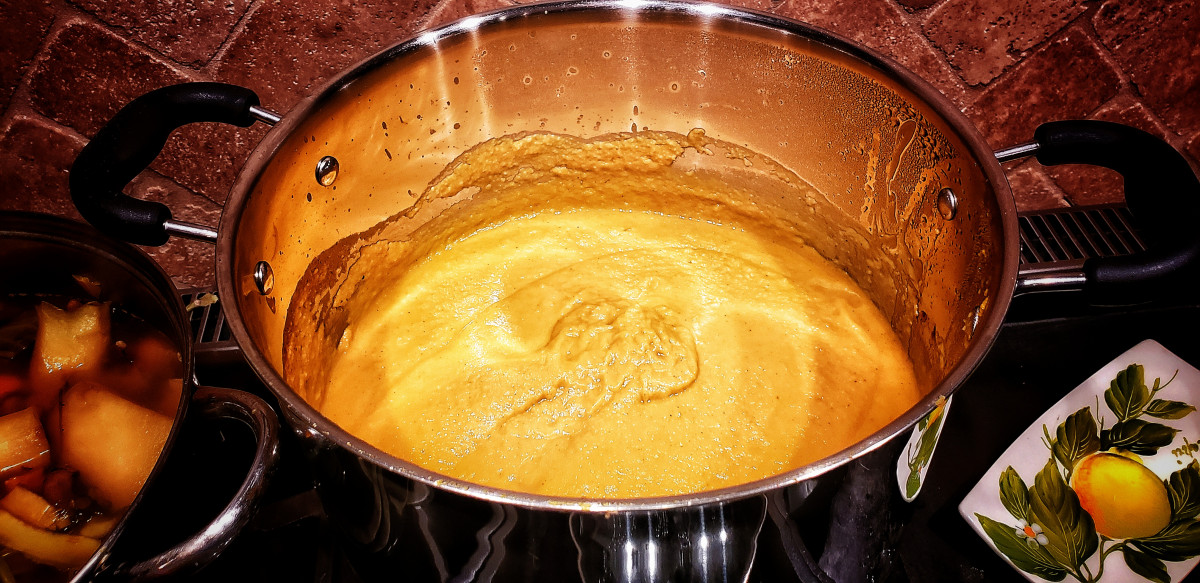
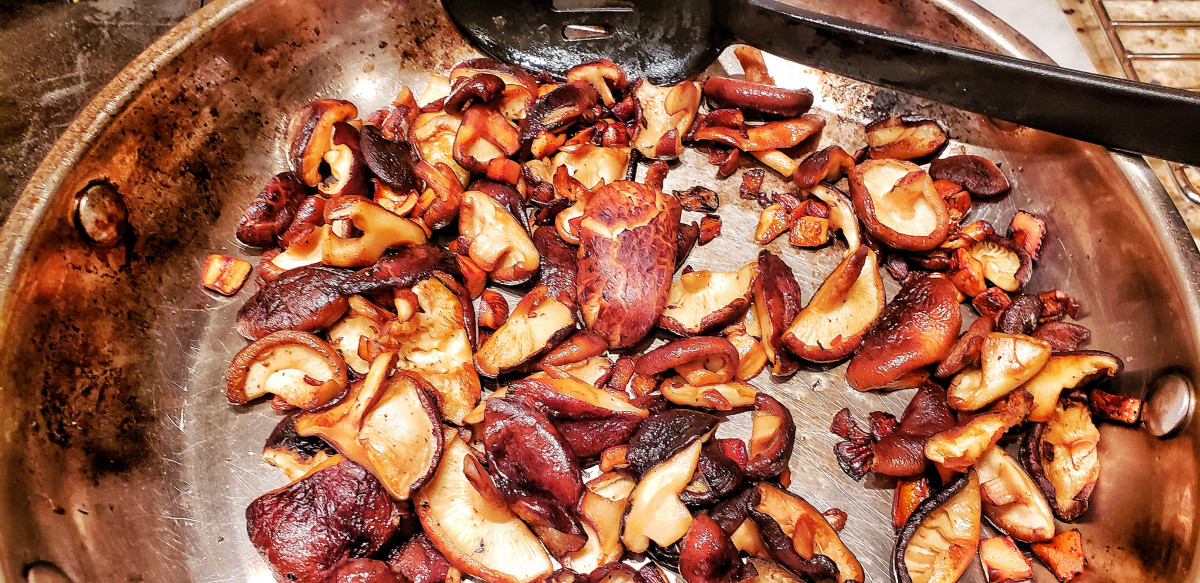
When preparing the coleslaw-esque salad, try to find the right balance of cabbage, apples, and mustard greens. We ended up making the decision mid-way through to reduce the cabbage proportionately to the number of apples and be extremely light on the potent mustard greens. Add some smoked paprika to round out some of the spiciness, salt and toss the salad until your heart is content. (Pro-tip: garnish with freshly, yet lightly toasted sliced almonds).
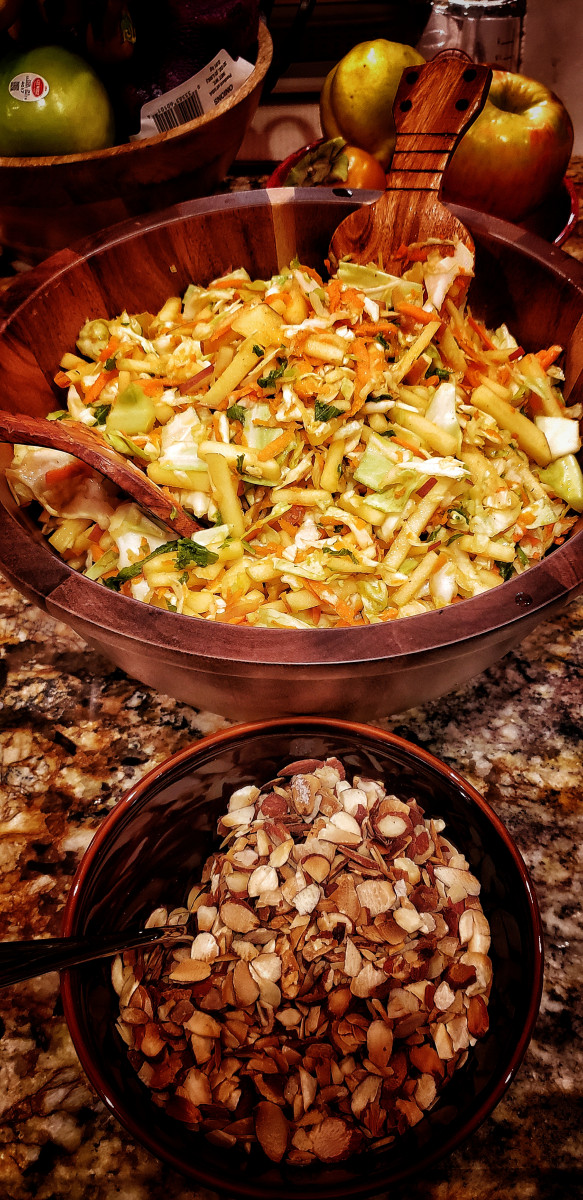
Make sure to invite the Uncle who has been around the world to wineries of all kinds and checks a case of hand-picked bottles in his luggage. Those one-of-a-kind pairings had everyone talking and smiling alongside the stories that accompanied them.
After a solid 5-6 hours of preparing, cooking, and dishing out the feast, I invited us all to share some pre-T-day gratitudes and enjoy with care. Much to my delight, all the family couldn’t help but express the sentiments of adoring foodies as the fall flavors flourished throughout the room.
On Thanksgiving, I took a backseat in the culinary department and mostly enjoyed the company of family instinctually feeding each other with easeful enjoyment. I couldn’t help myself later on as I decided to give my uncle’s state-of-the-art steam oven a go and poach d’anjou pears in a ginger, turmeric, and cinnamon infused maple syrup marinade then lovingly add in a side of similarily infused cranberry jam that my uncle suggested would be great with a dab of sriracha to help open up the palate. Toss in some left-over toasted almonds and you have the makings for a one-of-a-kind ice cream topping.
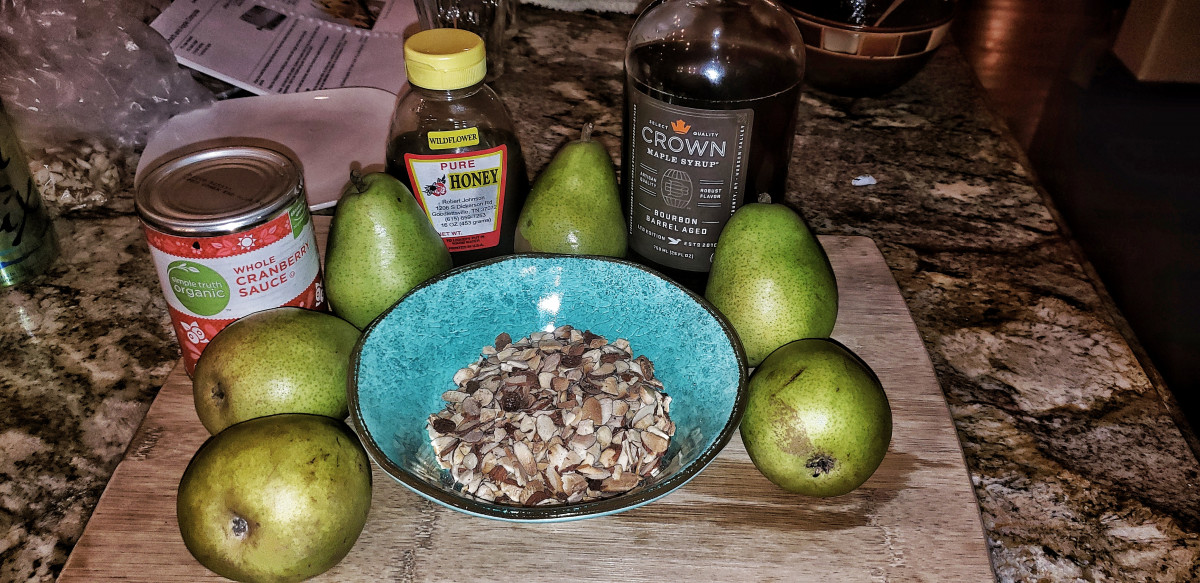
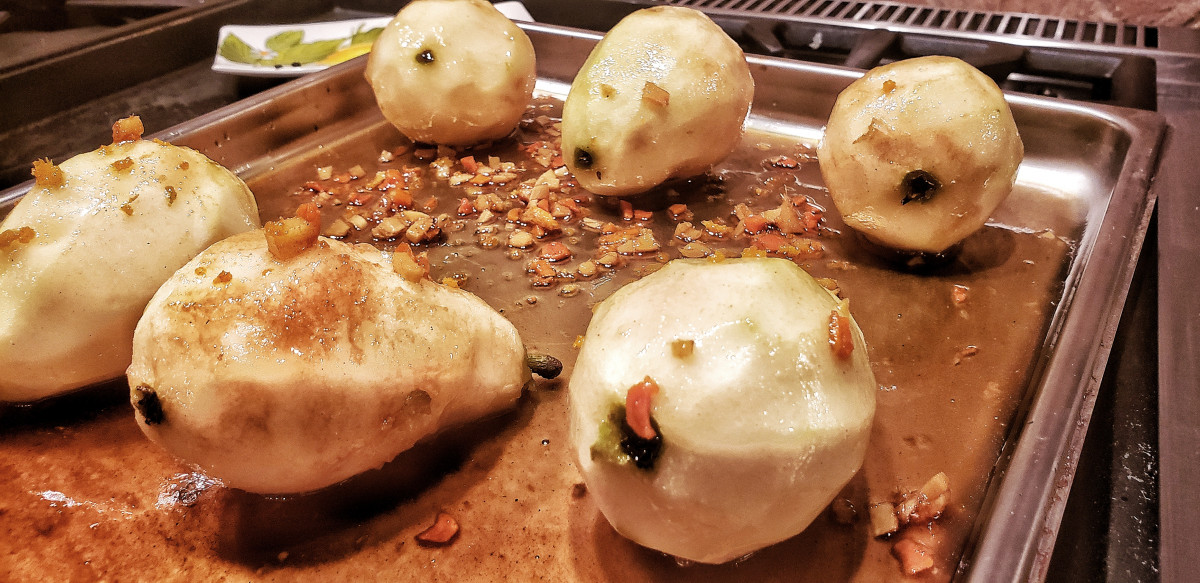
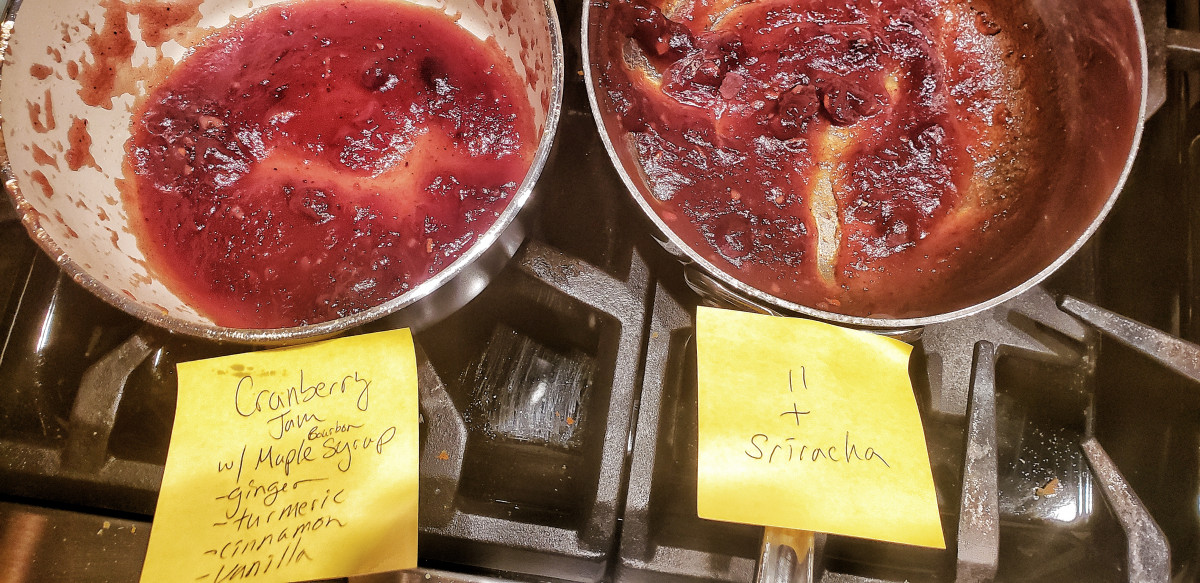
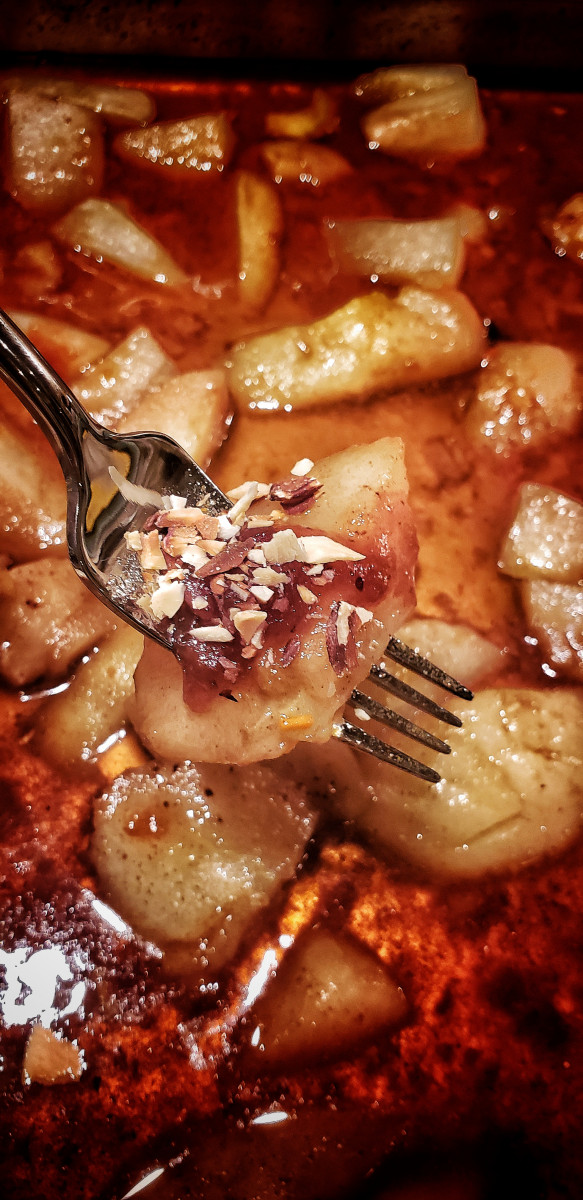
Naturally, there was a turkey carcass left-over, with plenty of meat, fat, and other soft-tissues still on it. Coming from the farmland broth paradise that is Hawthorn Farm, I couldn’t see it go to waste, so I boiled it down, along with all the veggies scraps from the day before, into a thick and delicious soup stock. The next day I was able to intuitively whip together a simple vegetable soup that was rich in deliciousness. Mostly made of carrots, sweet potato, garlic, and onion, my aunt added a nice touch of marinated cherry tomatoes from Trader Joe’s, which helped add a background of the Mediterranean to another Croatian-blooded family feast.
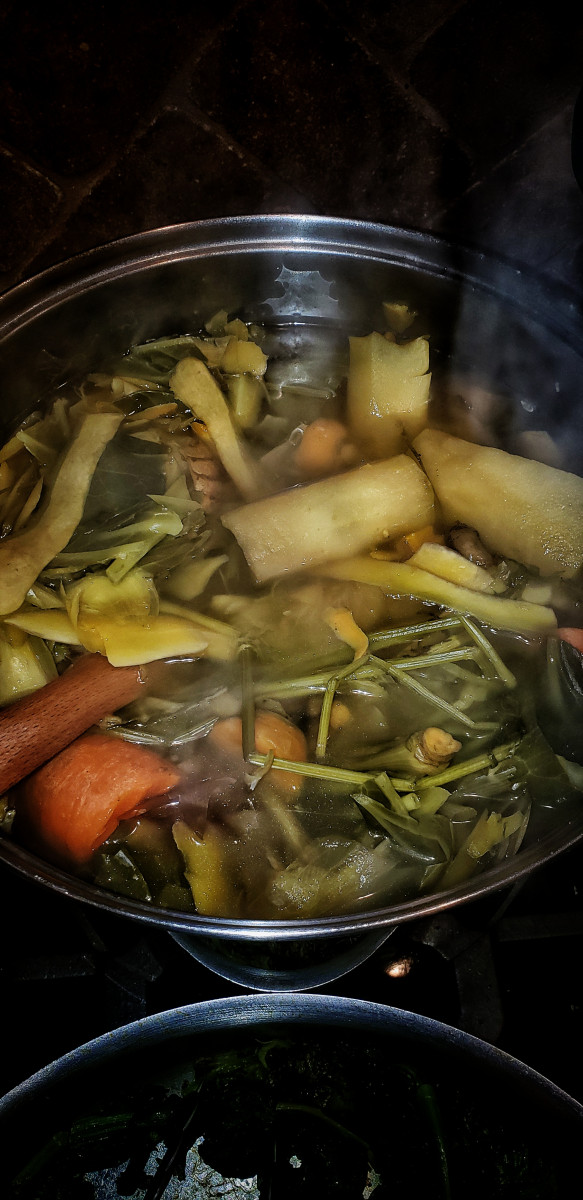
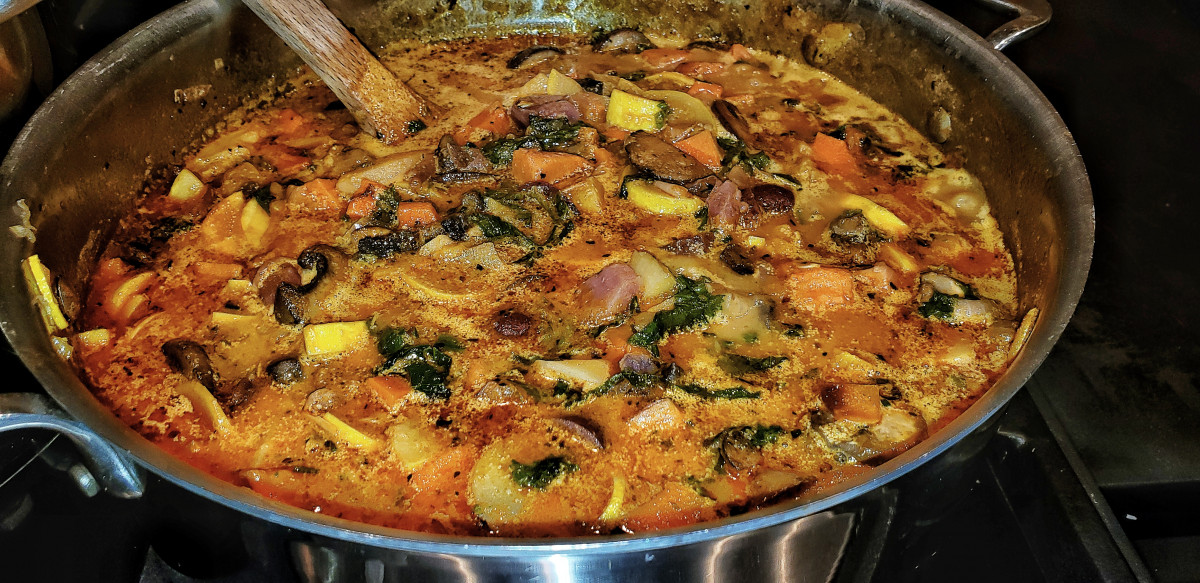
With a dinner, dessert, and a lunch now all in the books, it was time to dabble in the snack and breakfast department. Back to the store to get thick-cut bacon from happy pigs, pasture raised eggs, artisan bakery gluten-free pancake mix, organic blackberries, honey crisp apples, manchego cheese, smoked salmon, pistachios, cashews, multi-seed crackers, organic salsa, and blue-corn chips.
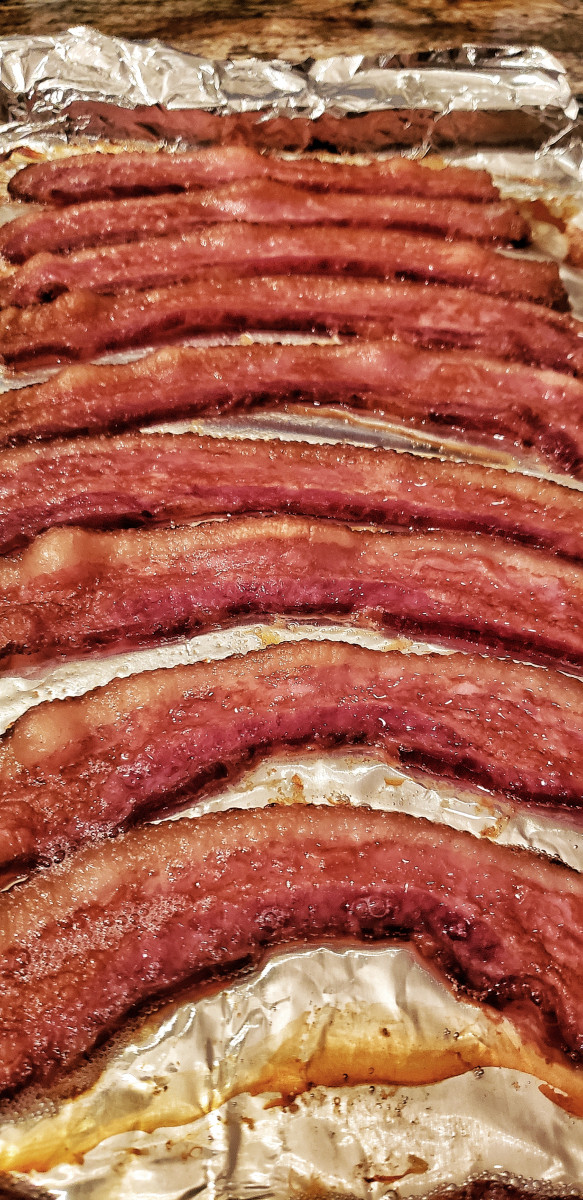
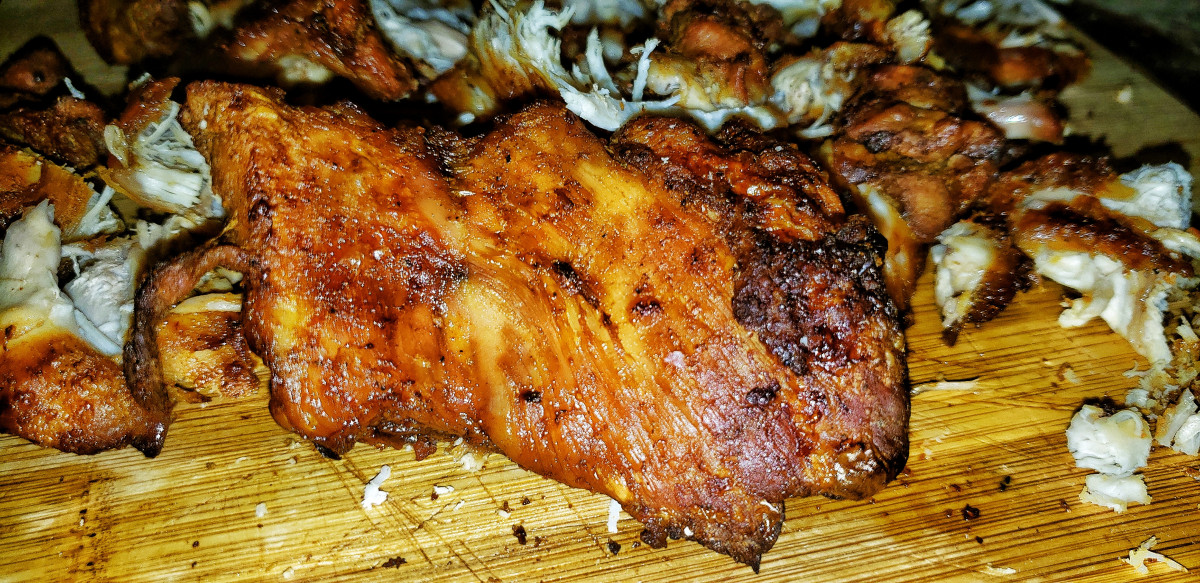
There’s nothing quite like seeing familiar smiles alongside a fancy cheese platter and snacks during a classic Sunday Night Packers/Vikings Football game for a family born and raised in Wisconsin. The only thing that made it better was watching the breakfast fare get devoured the next morning by everyone. I didn’t explicitly say the pancakes were gluten-free because lord knows that some might have abstained, but alas, no one refrained from diving in fork first. Sometimes you have to just let the food speak for itself.
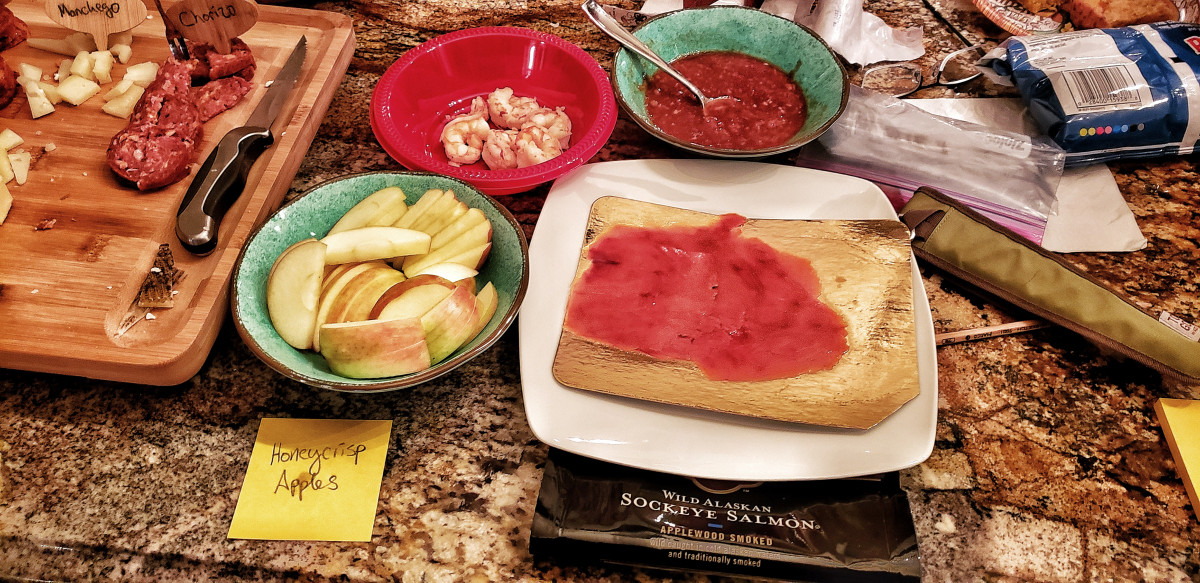
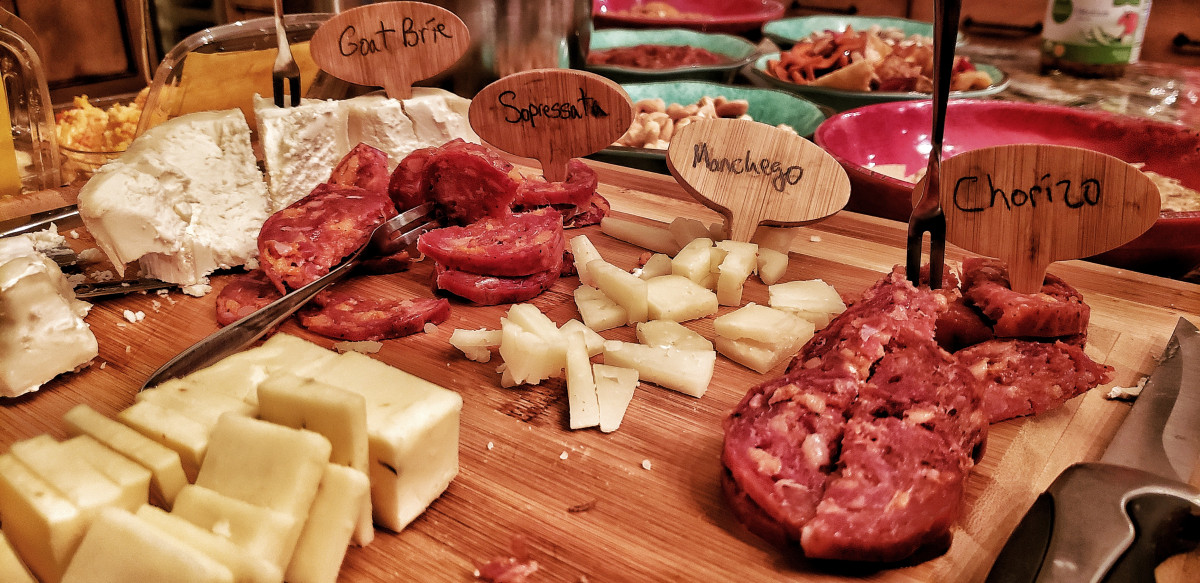
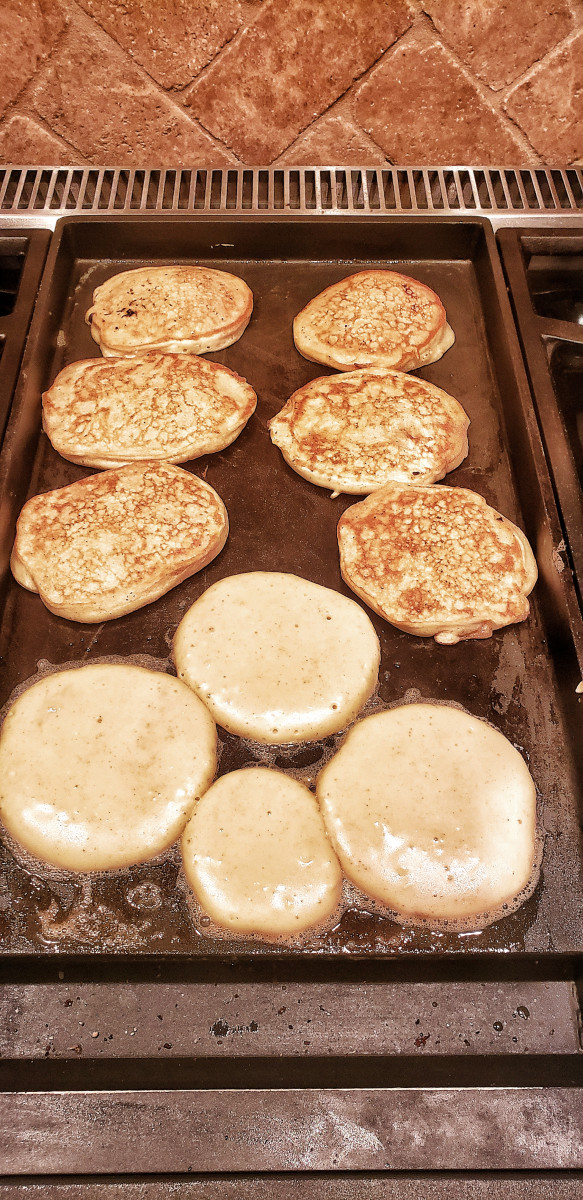
All in all, I have to declare that I did all I could with care in the kitchen department down in the music city, tending to my beloved family. This was a rare reunion of people who have fed each other countless times going back generations, and I feel incredibly fortunate to add my flavor to that tradition. It’s true that we inherit our culture, but it is also true that we co-create it in real time with choices we make and the bread we break. It is never too late to co-create and educate ourselves in the ways of nourishing each other in tune with the rhythms of nature and seasonal celebration. It is important to acknowledge that there is no one way to bring food to the table, and it is okay to let go of our expectations in order to let in the magic of the moment.
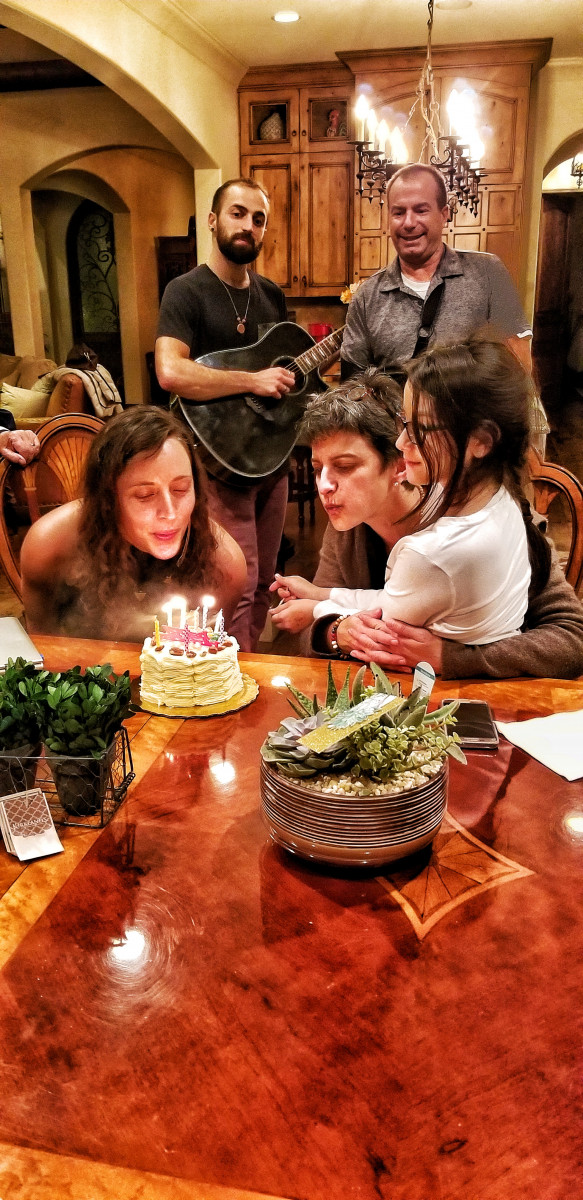
Every important relationship in our lives with eventually end up at the intersection eating and unconditional love. How can we meet each other there with care and all the incredible ingredients that make up a memorable fare?
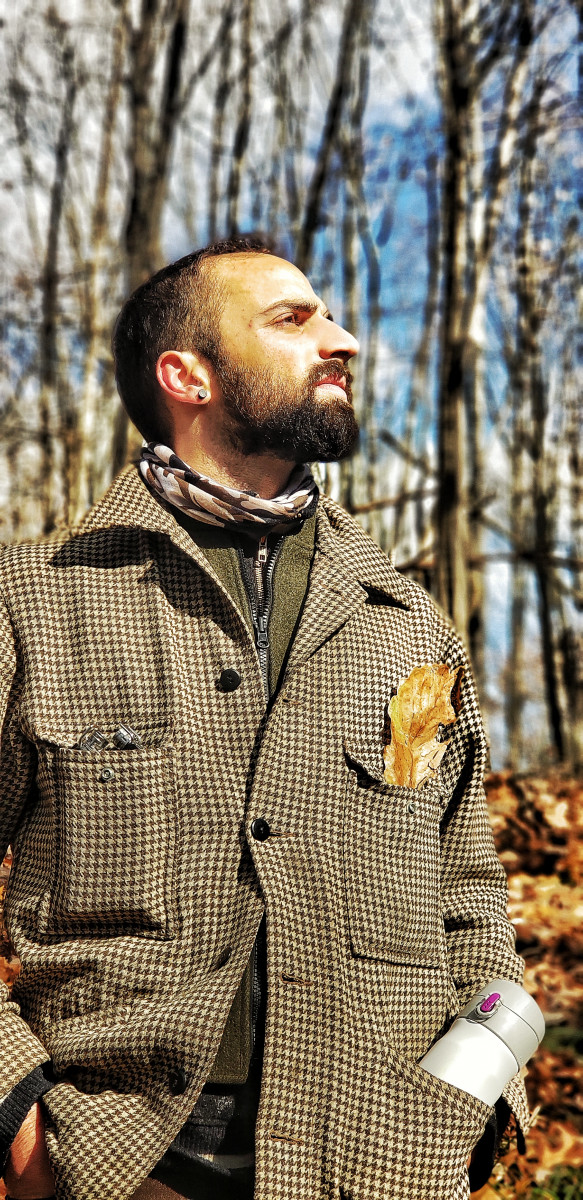
Permaculture Convergence 2018 Reflections- Week 5

The 2018 Permaculture Convergence took place in Toledo, Washington, just north of the Oregon border on September 28-30th. It was a gathering of progressive-minded movers and shakers from a wide variety of backgrounds and disciplines. There was almost too much amazingness for one mind to properly process. Every session was filled with at least 3 or 4 completely unique and captivating presentations. I had to trust my intuition and make snap decisions in order to not sink into the “fear of missing out” (fomo). Although I could not properly do justice to all of the variety of inspiring presentations I attended, I must address a few of my highlights.
First off, I must say that amongst all the doom and gloom in the news, the overall theme of this convergence, was people making changes where they are with what they have. Most people took very small steps and made a lot of seemingly insignificant decisions that ultimately are now stories worth writing home about.
The opening keynote highlighted this very theme, as it presented the cases of 4 individual short stories.
One story was Emily Scali, of Gridless Studio in Seattle, who uses concepts of permaculture and community engagement in work as an architect, educator, and entrepreneur. She gave an example of a vacant lot in south Seattle that she was able to turn into a mini farmer’s market and community garden. With little more than a shipping container and helping hands from the community, she was able to revitalize a dilapidated lot into a meeting area and food hub for the neighborhood. You can read more about it in this article: “BEET BOX OFFERS SPACE FOR FOOD, NUTRITION EDUCATION IN OTHELLO.”
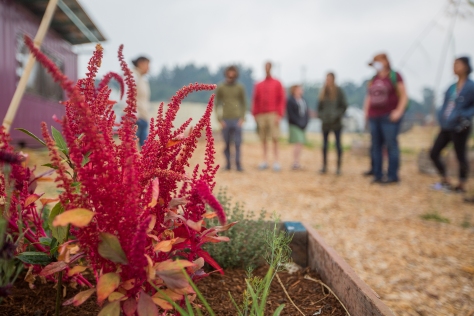
She also hosted a talk the next day on “Observe, Design, and Connect: Find & work with mainstream resources.” This workshop was simple and profound. With some easy prompts on what kind of threads you wanted to pull on in your life, we used S.M.A.R.T. (simple, measurable, achievable, relevant, and time-bound) goals to put our goals into tangible and manageable terms. She also had a big emphasis on making maps on all the resources available to you right now and starting where you are.
Another one of Friday’s keynote speakers was Jan Spencer of Eugene, Oregon. He is the brain behind Suburban Permaculture. Almost 20 years ago he bought a mid 50’s suburban house on a quarter acre property and has since turned it into a permacultural oasis and shining example of how suburban homes can retrofit for a regenerative future. In his own words:

“The ideal, to take care of more needs on site, to reduce my ecological and political footprints. I rarely buy fruit and vegetables. Solar energy helps warm both the main house and the bungalow. There is a 6500 gallon rain water catchment system. With filtration for drinking water capacity if needed, I can be off the grid for water. The place is aesthetically beautiful. It is a small example of the much larger transformations in land use, culture and economics I would like to see. “
Jan also hosted a workshop the next day on Suburban Permaculture and dove into the history of the suburbs in general and then really was passionately advocating for people to get involved with their local governments in order to enact change through the values outlined in the city or state’s agenda. The local neighborhood associations almost ubiquitously have their goals in line with the goals of permaculture. He recommends abstaining from the “p” word in general and just approaching the problems from a practical and relatable stance. Most neighborhoods have agendas to green their energy, to solve transportation issues, to bring healthier food to schools and communities, to create more jobs in regenerative fields— we need only to use their language and weave into practical possibilities.
Dr. Elaine Ingham was Saturday’s keynote speaker and I really would need another post to do any bit of justice to her presentation. Essentially she is and has been an innovator in the soil science fields as a researcher and professor. She is an incredible speaker and has the ability to articulate the complexities involved in microbiology in a way that even the most average citizen can understand. I believe that if the general populous knew what she knows, it would fundamentally crumble the industrial agriculture, petrochemical fertilizer, and related industries. What she is presenting is pretty simple; all the nutrients we need are already in the soil. We need only the right combination of microbiology to access it, in order to make insoluble nutrients soluble. You can find her work under the name Soil Food Web, and she offers incredible classes online and is a sought-after speaker. I first heard about her on the Permaculture Podcast here.

“Soil Food Web
Our Mission: What We Do and What We Believe In
We grow plants without disturbance, without pesticides or inorganic fertilizers.
We use living, beneficial soil organisms to do the work of making soluble nutrients available to plants, nutrients that are in the soil in extremely high amounts but need the soil food web to make those nutrients available to plants.” (from soilfoodweb.com)

Finally, I wanted to highlight the work of Michael Becker, arguably the coolest middle school teacher on the planet. He has been at the helm of Hood River Middle School’s Food and Conservation Program for 11 years, a position he designed himself. He is an incredible example of how permacultural ideas can find their way into school’s curriculum. He treats his students like the designers, architects, builders, and whole humans that they are.
He started a now thriving farmer’s market garden and has managed to secure grants to build a green house and put solar panels on the school, making it energy net zero. He really emphasizes a relationship to the “solar budget” or the amount of energy that is harvestable based on the output of the sun in real time and not the use of buried sunlight in the form of fossil fuels. His goal is for his students to understand the parts and the relationships between them in order to bring them more fully in the reality they inhabit. We must not wait for optimal conditions to arrive, we must create optimal conditions in order for our communities to thrive.

All in All, the permaculture convergence held more stories than I could possibly convey. It was so inspiring and motivating that I can hardly put into words the dreams it has sparked in me. The illusion of separation is so widespread in our culture, but when we turn our attention to the rhythms of the natural world and the many solutions that are exemplified by so many innovative people, there is not only hope, but practical possibility.
Hop(e) into the Future – Week 4
This time of year beckons us into our roots.
Autumn sinks the energy of life into the underworld to slumber for a season. The falling of the leaves are teachers giving us permission to let go of our overwhelm and trust that we have done all we could this past peak solar cycle.
How do trees simply, and beautifully, let go of the chorophylled solar panels that power their restorative respiration?
How can they trust so fearlessly in the cycles of life as to give into the darkness? Do they hold on until the very last moment before there is nothing left in the branch to clasp the stem anymore… What is it that held it just moments before?
Do the tree beings ever question whether this is going to be the winter when their buds don’t make it through the cold grip of father freeze?
I like to imagine trees trusting their original instructions and each other to continue on in service to the earth, masterfully orchestrated by the sun, no matter the weather or uncertainty of the future.
I like to imagine the maple trees sending their roots little nutrient packages for the holidays, trusting that an investment in the future will reward them with all the sap their trunks could handle come the sunny days of early spring.
How do they deal with the death of not only their leaves but their fellow trees? When can a tree being even be declared dead?
Does the earth sense the unbecoming and make them a delightful deathbed?
I’ve learned that the most effective way to tell if the animal in front of you is dead, is an eyeball that doesn’t flinch upon touching it.
Is there an analogous technique for trees? Is it when the knocked upon is hollow underneath? Is it when the leaves of the tree cease to be? Is it when the woodpecker has drilled a thousand and one holes successfully?
As we keep ourselves warm with the bodies of fallen tree beings, whether they are in the woodstove breathing, or holding up the walls and ceiling. We are warmed by the life that the light is consuming. We are reminded by the cold that thee inevitable is looming.
Where two tracks meet, and only one leaves… We stay humble by the consumable grief.
We recognize that all life lives and dies in due time, no matter what we achieve.
Gratitude is a practice of weaving those connections through conscious recognition of the you inside thee other. The bloodline within your sisters and your brothers. The honor that comes in service to our gracious earth mother.
Are we all just vessels of water, drinking in the many ways in which waves can be?
Is a cloud just a moisture filled cruise ship looking for a safe harboring?
Is the ice nation not but a memory bank of old world wonders and feats of creatures acting courageously?
Is the dry land in which we wander but the floor of an ocean of atmosphere waiting for the next wind shift? Doesn’t the water give us the wings required for all life to live.
Gravity keeps us grounded into predictability and yet we are walking H20 galaxies. Holding us down to earth, home of the bi-pedal ath-elites. DNA beings unfolding into a shared reality.
Is death just a black hole that births us into infinity?
Is evaporation really as bad as it could possibly seem, or do we all just return home eventually?
When we set fire to water, we raise a little steam, sure as a ship on the mississippi, we always end up downstream.
Our earth is 70% liquid water, and our human bodies are nearly so as well, on average.
Is this proportional symmetry an isolated incident or is this one of many in an unbroken stream of coincidence?
Our clay bodies are requesting that we tend to our basic needs, while our minds imagine all the goals we could possibly exceed. Our souls know where to go, tending to the dark places tenderly.
Autumn asks us to look into our shadow, truthful and lovingly. It shows us how we can be one human family if we are mindful of feeding each other seasonally.
The Sun sinks low in the early afternoon, his death reminds us that we will be born again soon.
A Date With Thee Inevitable Darkness – Week 3
As I sink myself into the seasons of life here on the farm, the realities of the autumn are setting in. The autumn is no less the beautiful decay of our summer fruit and the colorful symbolic death of the Sun. It is a time when we reap the harvest of our efforts throughout the year and reconvene with our community to tell the tales of season’s past.
My efforts this quarter are to really live in harmony with the offerings of the season. The light is diminishing significantly and our source of sight and heat must come from outside (and often artificial) sources. I’ve heard people of the past refer to your age by how many winters you’ve lived through because the fact is, if you had to be self-sufficient in terms of heat, food, shelter, etc., life would be quite the reality check this time of year. Autumn would be a time of really inventorying your life, resources, basic needs, and the environment in every way before the brutal cold (and in our case, wet) sets in.
We are doing these things in our own way here at Hawthorn Farm. We are harvesting what is left in the fields: the corn, the beans, the squash. We planted Garlic for the next season, are sowing mustards in the greenhouses, and seeding cover crops in the plots already laid to bed for the winter. From paving a trail in the woods to helping the neighbors spread cedar bark, we are putting blocks under the unused tractors, room servicing the mama goats for a winter of pregnancy, and securing our dwellings for the winter occupancy.
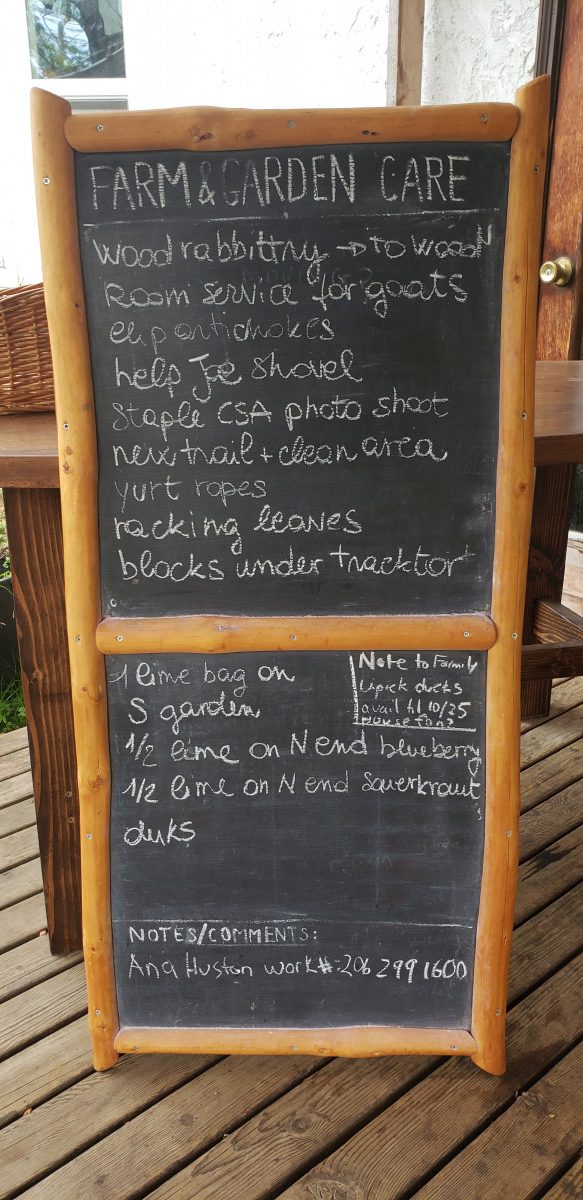
I’ve never known raking leaves to be anything other than a purely aesthetic chore and now I’ve been realizing how much of a resource these really are and I get to rake with a purpose. They are an incredible resource for nutrition in general and can be added to the compost to further build quality soil. We have mostly been piling that up next to the duck and compost chicken pens in order to balance out all their nutrient-dense waste. Fresh bedding makes for happy poultry, and happy poultry make happy eggs. Happy eggs make for happy people and happy people makes for a happy earth.
We just found out that our goats love maple leaves too! I know most people believe that goats will eat anything, but they can actually be quite picky and their tastes change with the seasons too. I haven’t spent too much time taking care of the goats, as my focus has been on the poultry, but I am so curious about these creatures and the unique personalities they bring to the dinner table.
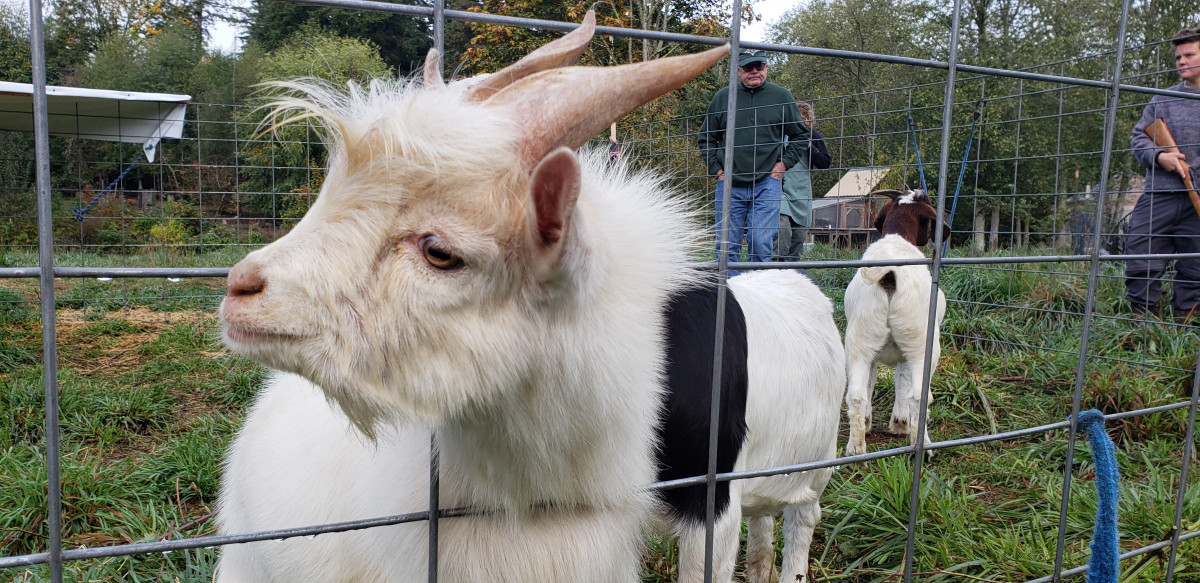
Speaking of the dinner table and thee inevitable darkness, another autumnal task around the farm is the culling of the respective flocks. Historically, animals were processed in the fall, not only to stock the pantries with their bounty, but keeping them alive meant feeding them during a time when food resources are scarce.
Having 50 ducks is great, spring through the fall, as there are eggs a-plenty, but when the dark days of winter loom overhead and the ducks go on egg-laying hiatus, suddenly supplying them with premium organic feed at $30/bag doesn’t sound like a good return on investment. Ducklings from the spring can sometimes take a year to lay, but can also start in the fall. If they start in the fall, they will often lay eggs all through the winter, where the old hens will have started to take their annual break. This is another incentive to cycle out old hens, who may not be laying at all eventually, and cycle in the new ducklings who could start ovulating in time to hold over the egg quota in the winter.
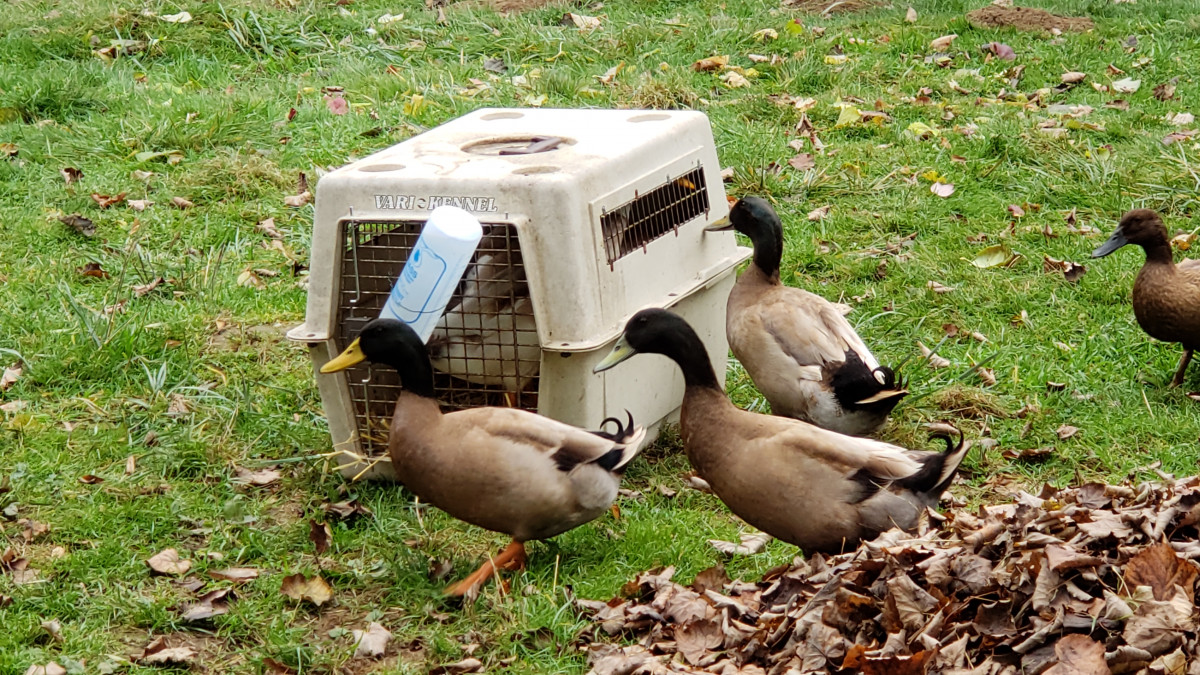
I’ve eaten countless animals in my lifetime, and yet I had never killed one, or even been around people killing them before. That changed this time around the sun, as we had three male goats living in the pasture, who were not going to make it through their first winter.
From a purely practical stance, males of almost any species are of the least practical value to a farm. Having more than one of any species lends itself to diminishing returns on investment. Male goats are only really good for breeding, but most people these days “rent” a buck with good genes to come in for a short period during the breeding season. They can’t produce valuable milk or future babies, and their hormones alone actually contribute to the commonly known “goatiness” of the mama’s milk. We had an especially testosterone filled Buck visit the farm for a month, and his stench could be smelled from across the farm and his oils would stick to your clothes just by being close to him. Some males will be raised through the summer as ours did, and others don’t even make it much past the weaning stage of life. We have roosters routinely dropped off at our place by people raising chickens in the city because they aren’t even legally allowed within most city limits due to their incessant crooning. (I once counted an interval of a rooster call every 9 seconds at 4 am between all the males chiming in within the neighboring farms.) If you have too many roosters per hen, the hens suffer from all the raging testosterone and end up with bare backs. The aggression of the male ducks (drakes) is also a real danger to the hens. There is more to say about that, but males are historically the ones to be plucked first.
This brings me to my own story being a part of the circle of life and death. I could write a whole novel based on the multiple layers of rumination this process has taken for me, but I’ll keep it brief for now.
When it came time to take the lives and honor the 3 goats in our pasture, I knew that I had to be a part of the equation. When it came time to do the deed, I knew that I was ready for the right of passage in pulling the trigger. I had never shot a gun in my life before, and here I was about to have my first shot be in the direction of a living creature. The first two goats were the twins, not born on the farm, and therefore shy around people, they presented quite a challenge to the other two wranglers. My little guy was born here on the farm and therefore was all too trusting and almost too welcoming of my company.
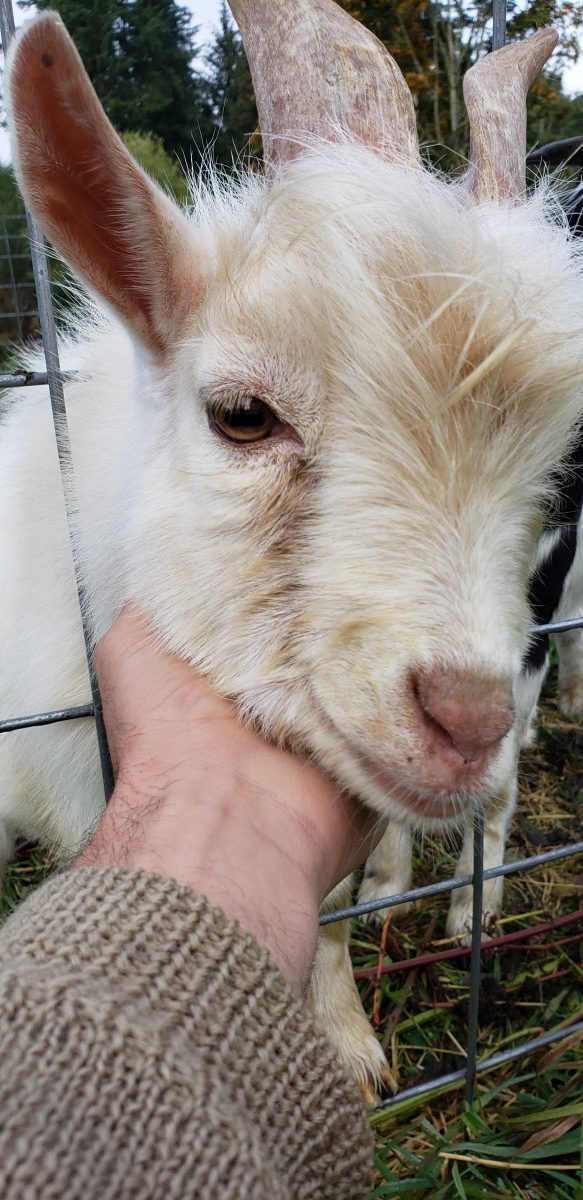
The usual routine is to let the boys go hungry in the morning so that their stomachs are not full of food, and also so that when it comes time to give them their last meal, they are eager for it. We place a plate of grain in front of them and wait for them to distract themselves in the food and place the rifle to their head with honorable confidence. Ideally, there is only one shot needed and little to no pain felt.
I’ve been thinking about how these goats and all the other animals for that matter, only have one bad day. When it comes down to it, they only have a few bad moments in their whole life. It was surreal for me to be connecting with this living creature one moment and sitting with his residual nervous system pulsations the next, and then eventually taking him through the process all the way until lunch. I could really feel how his life left his body and when the spirit was gone, it became a lot easier to proceed with the next steps. I could also feel how much I wanted to participate even more, not less, after having taken his life. I wanted to honor his existence by using every part of him and nourishing the bones of the humans I live with and love.

I believe that if all people were required to be a part of the processing of an animal they would then consume, we would have an incredible shift in consciousness surrounding the treatment of animals. All the data on greenhouse gases and toxic waste emitted from industrial ag. cow farms sometimes can’t convince someone to change their eating habits, but I can guarantee that being a part of the slaughter would. I could see a lot of people turning vegetarian if we were required to kill the animals they ate. I also see the other side of it, where we actually want to be more involved with the natural predator/prey dynamics that nature requires. As predators, we must take life to live. Whether that be plant or animal, reverence is required and relationships evolve in being a part of the process.
I will never take my eating of others for granted again, and I will put their nutrients to good use. I owe them my life.
Edible Awareness – Week 2
What does it mean to eat with awareness?
Is it simply eating all locally sourced organic and seasonal ingredients?
Is it eating in a community, around a table, and in gratitude?
Is it eating on the edge of your seat on high alert?
It could be any of those things and much more, and there is no one way to eat with a conscience, with intention, with gratitude, and in harmony with the Earth.
My motive here is to be an ambassador for a new and ancient story of connection to our cuisine, our culture, and our community. I believe that what, when, where, how, and why we eat all speaks to our values as individuals, as members of a human family, and as inhabitants of our greater ecology.
We are not just what we eat, as the old adage goes, we are what we absorb and the stories we author along the way.
Not all food is created equal. All food has a story to it, and that story becomes part of our story at every intersection. The difference between your average sandwich and your average pie is obvious at the surface, but what happens when you bring into your awareness the story that each of those foods is connected to?
Let’s say, hypothetically…
That this sandwich consists of freshly baked sourdough bread whose starter yeast has been a living, breathing family member for 4 generations. The flour was hand-milled from the neighbor’s backyard wheat nursery. The salt in the dough was harvested by hand from the Puget Sound and dehydrated in the same building you are eating it in. The water used to mix the dough is from an untouched underground aquifer, rich in minerals, free from any city pollutants. It was kneaded by an artisan baker famous for her lovely loaves. (Did you know that all sourdoughs change based on the unique bacteria present on the kneader’s hands?) The bread is then buttered with organic, grass-fed butter toasted over an open flame fueled by cherry and applewood…
We haven’t even got to the ingredients of the sandwich yet, and already my mouth is watering.
This is, of course, a great exaggeration of a tale, but the difference is clear. This special bread with a story and the sandwich it encloses is going to taste much different than if this sandwich was book-ended with two soggy pieces of wonderbread… Would you dare put some Oscar Meyer bologna between the slices of heavenly sourdough? How about some Kraft American cheese? Would you rather have some local pasture raised chicken marinated overnight in all your favorite oils add spices? Assuming the cost of money, time, energy, and effort are equal, I can’t imagine anyone choosing the manufactured over the handcrafted.
Of course, the quality of our food is highly dependent on the amount of energy we put into it. This is where the story comes in. I think the most obvious barrier in the modern quest for quality food these days is money. I have a lot of compassion for those individuals and especially families that have a major cost prohibition to getting wholesome and healthy edibility in their lives. I can still remember the days of switching off between ramen noodles and the most generic pasta possible sprinkled with cheap cheese and garlic salt, just to make it palatable.
The reality though is that quality food with a story worth telling doesn’t have to cost an arm and a leg in the cash department. When we are exchanging value in the food world, this can come in the form of proportionate effort, energy, and time. We can grow a some of our own quality food for little more than a few bucks in seeds, a planter box, and effort/energy over time. If this sounds like too much of a stretch, there are plenty of work-trade opportunities on farms, where for a few hours of work, you can go home with a basket full of fresh, seasonal produce. If you want to invest in a farm through community supported agriculture (CSA), you can pay a fixed amount per season in exchange for a box of produce on a weekly, bi-weekly, or monthly basis. This is a cost-effective way to mitigate the costs of healthy food and a great way to support the local farms along the way.
At Hawthorn Farm, we offer a weekly farm day every Wednesday where people can spend the day (9-2) with us working on choice/passion-based seasonal farm projects. We then have a feast from only farm-sourced ingredients at 2 o’clock. This meal is like having the most legendary Thanksgiving every week. I am always in awe what we are able to put together from the fields every week, especially now that we are at the tail-end of the growing season. How many people experience meals from ingredients that were harvested that day from within 50 yards of the table? How many people have eaten an animal they killed with their own efforts that morning and butchered just in time for lunch? I imagine not that many people in our culture don’t experience that in their lifetime, let alone on a weekly basis.
Our common ancestors were experiencing these types of relationships on a daily basis and it is a significant part of our human heritage and our survival as a species. Humans are the only animals to experience such immense disconnection to the story of their food.
My efforts here at Hawthorn Farm are in support of this quest of what, where, when, how, and with whom we eat and why that matters.
Stay tuned…
Stay aware…
Stay fed…
All the natural things,
Keith
